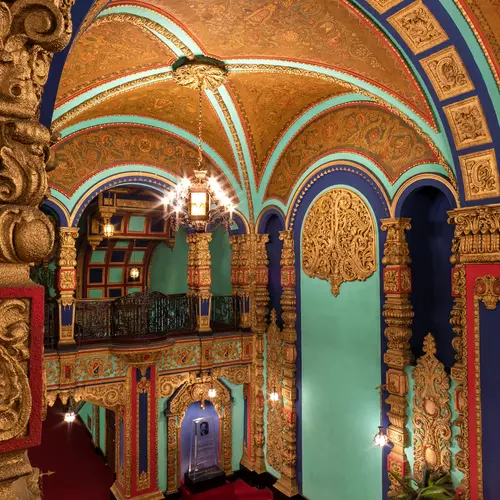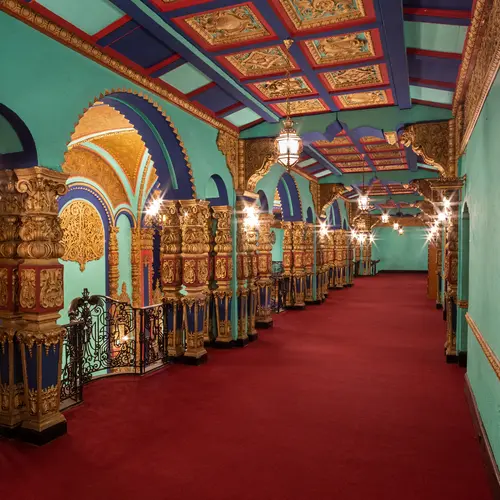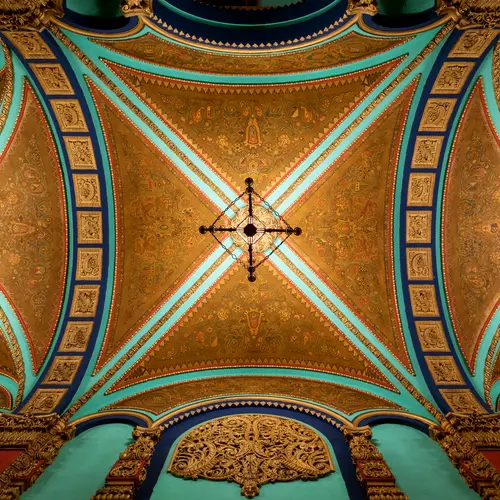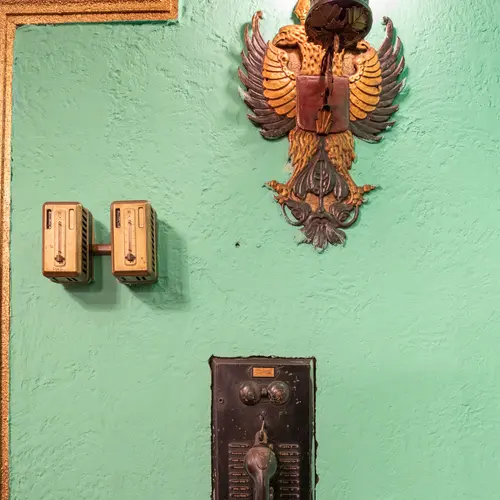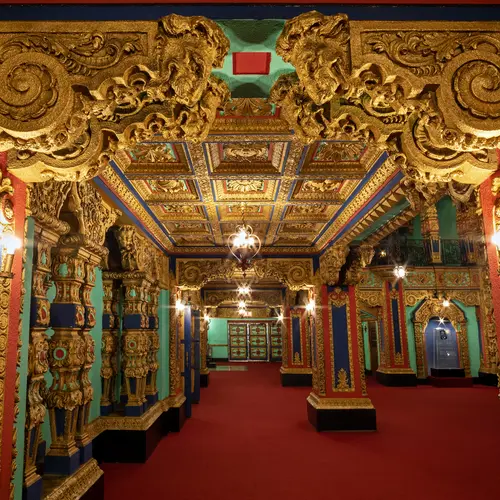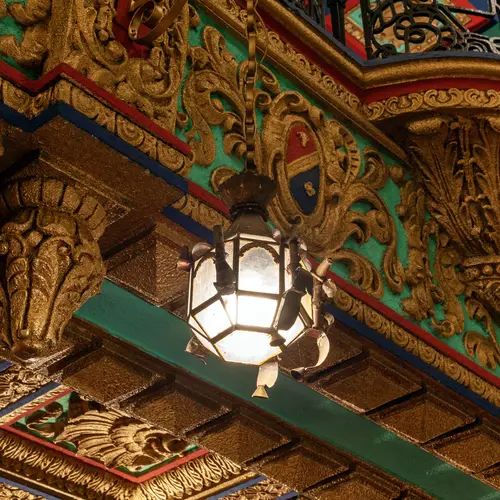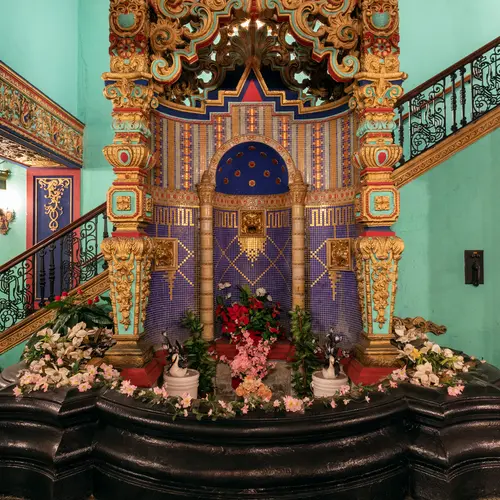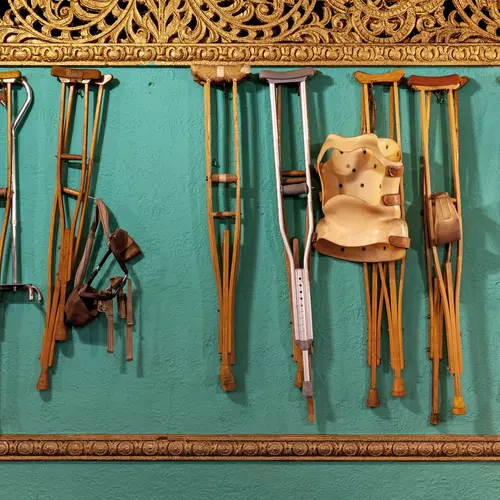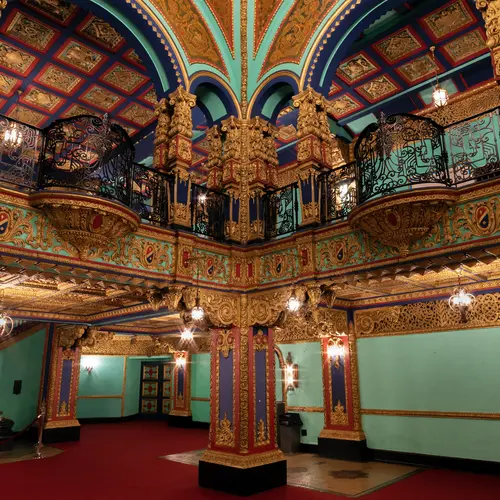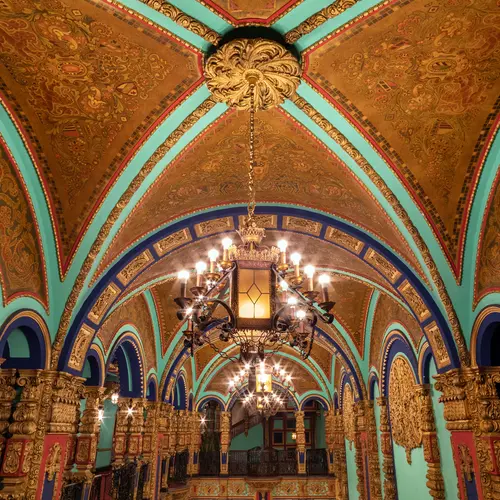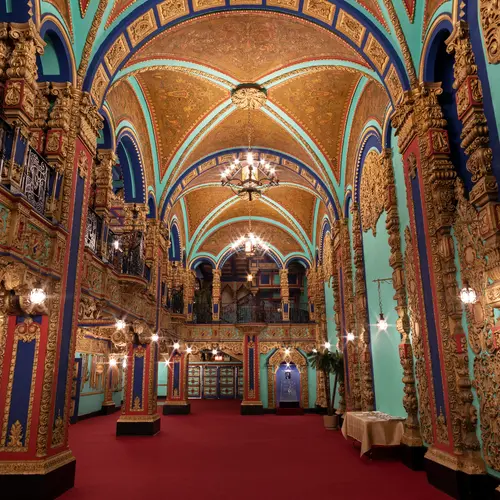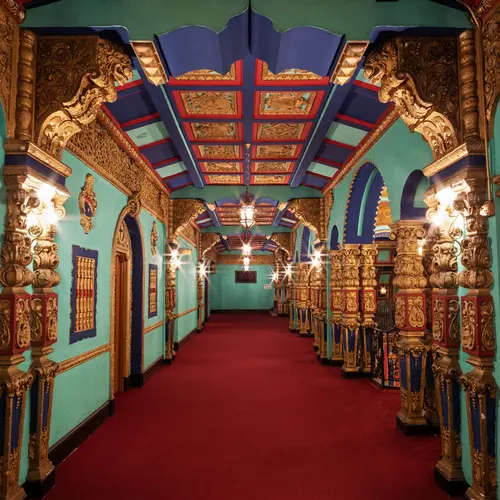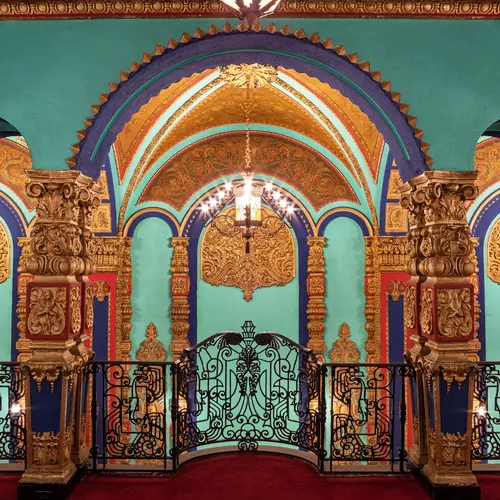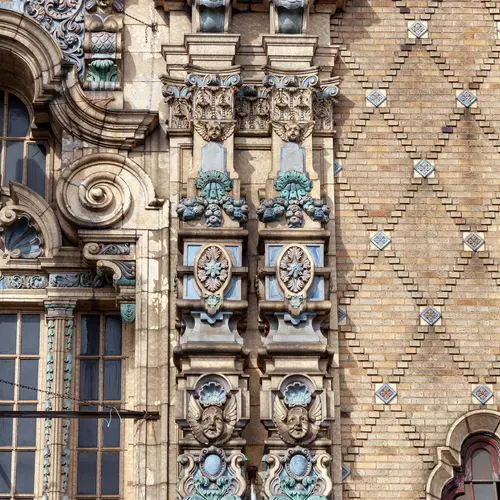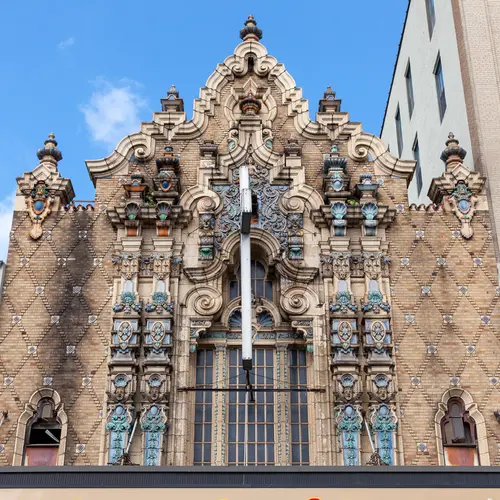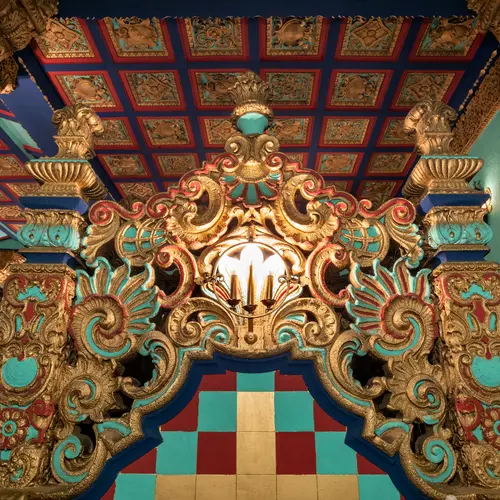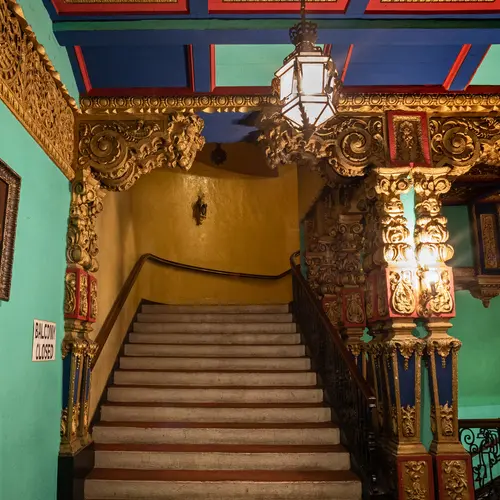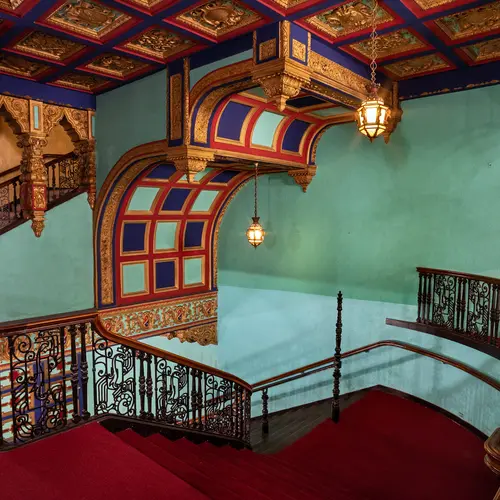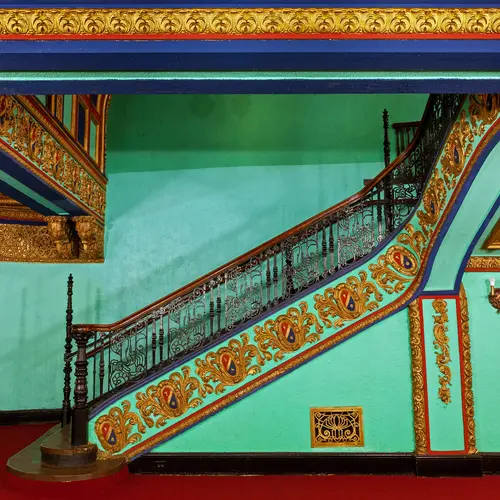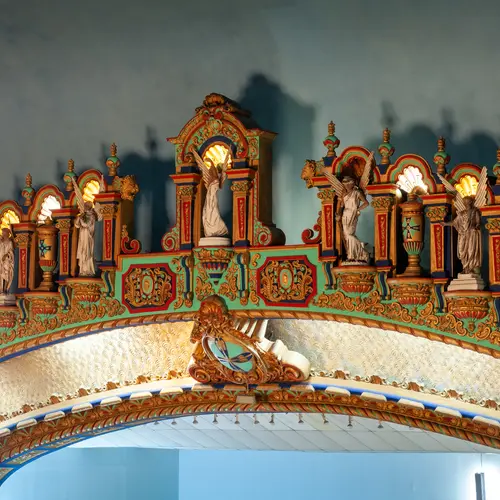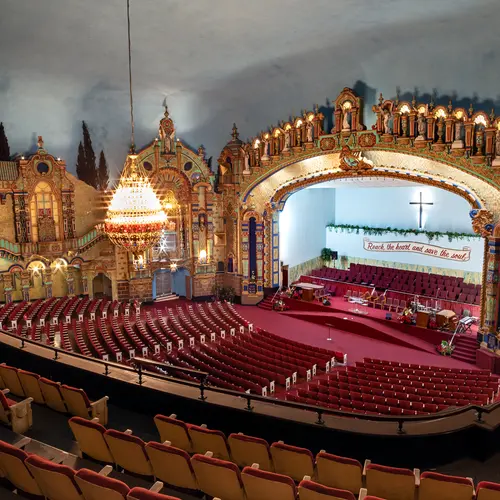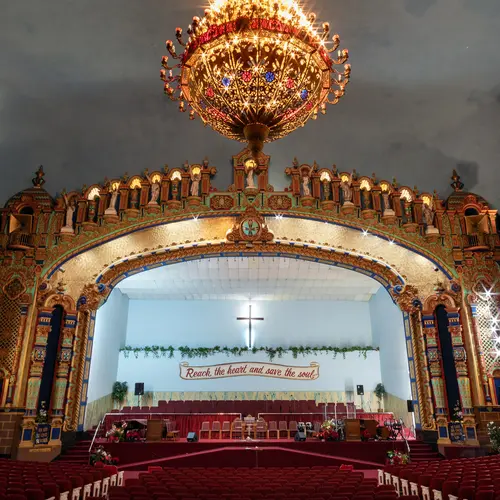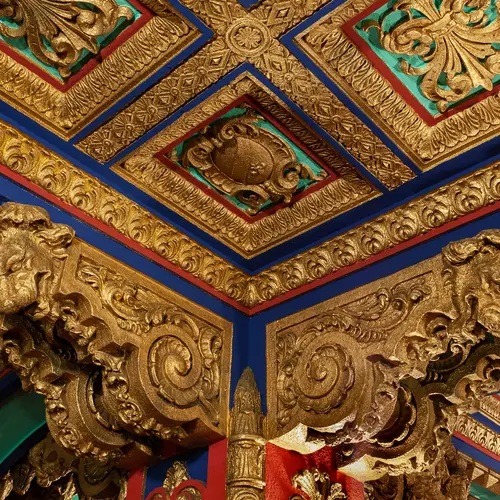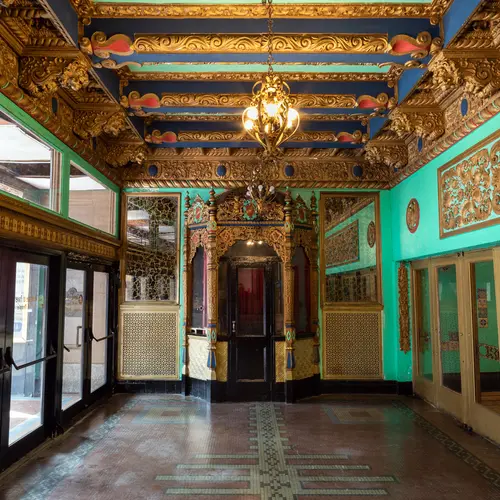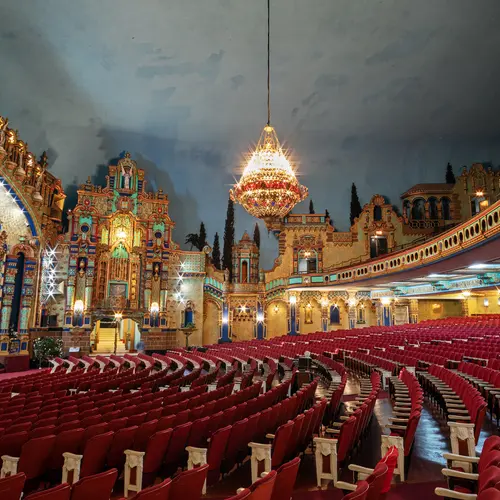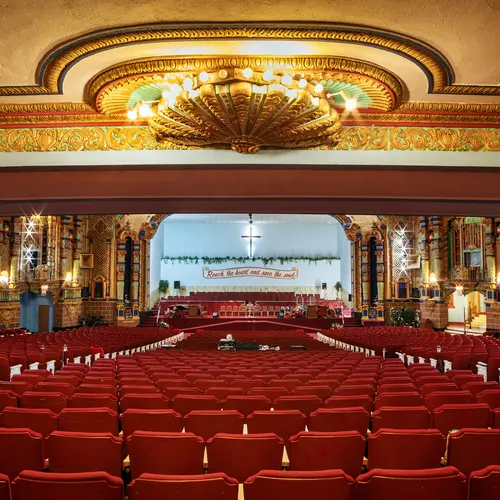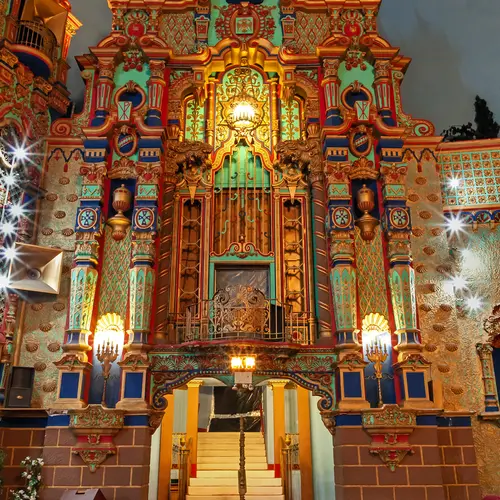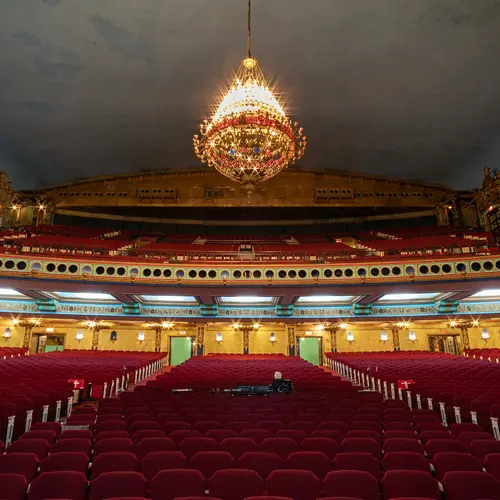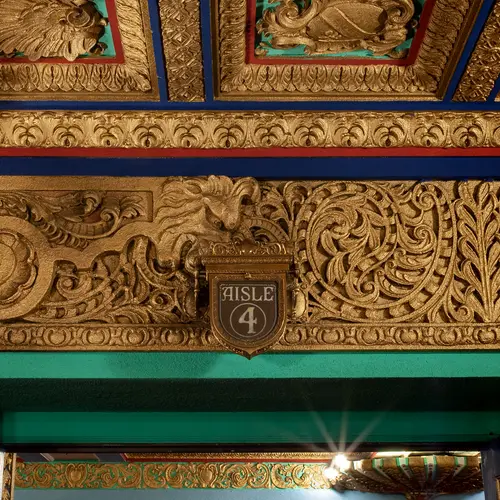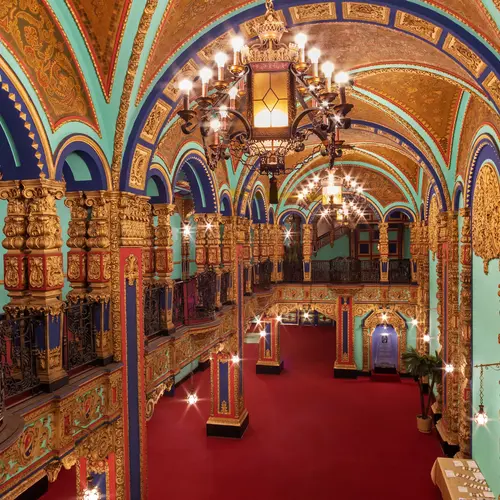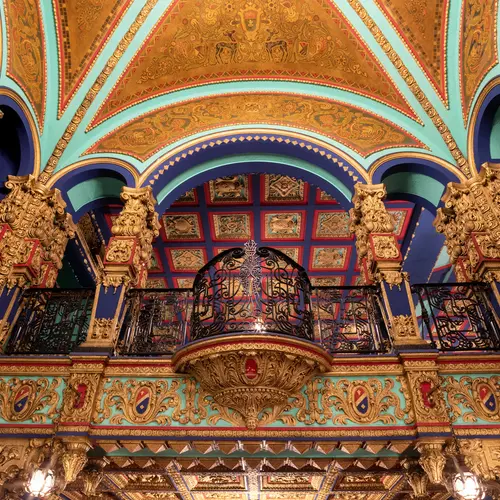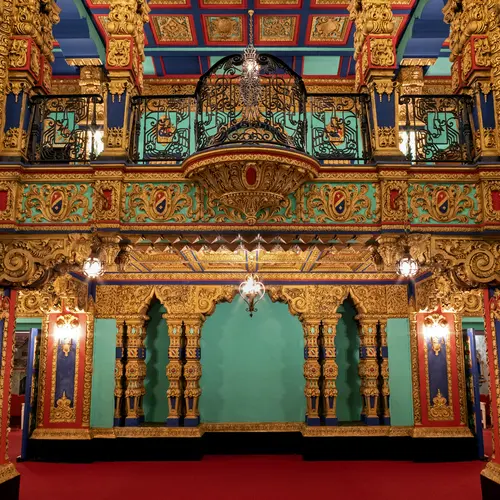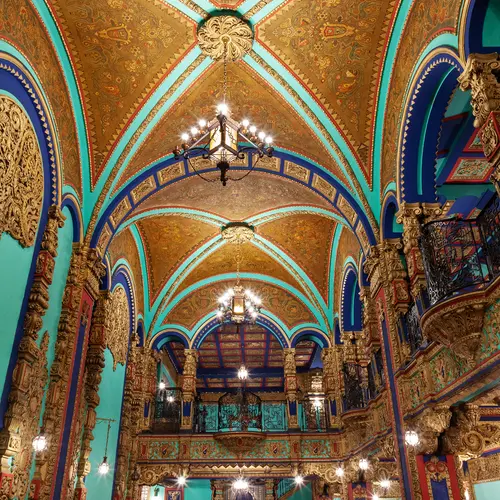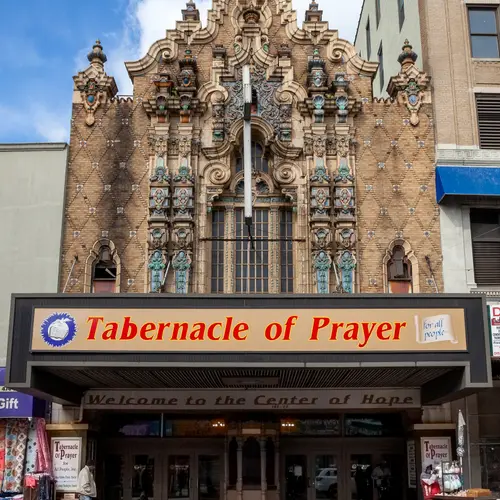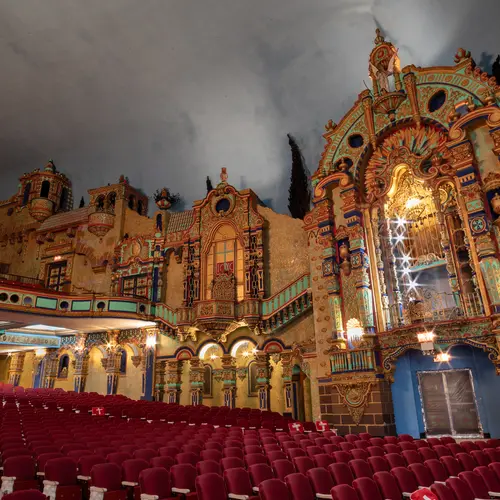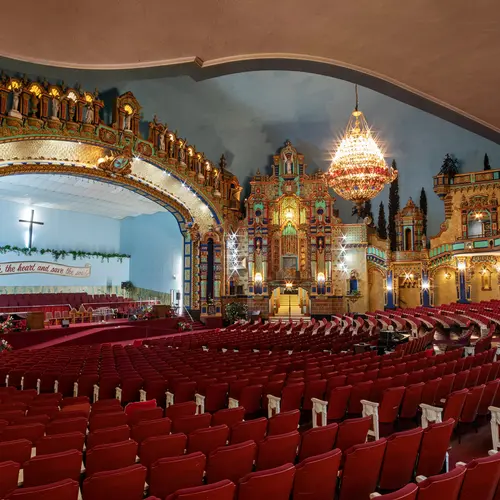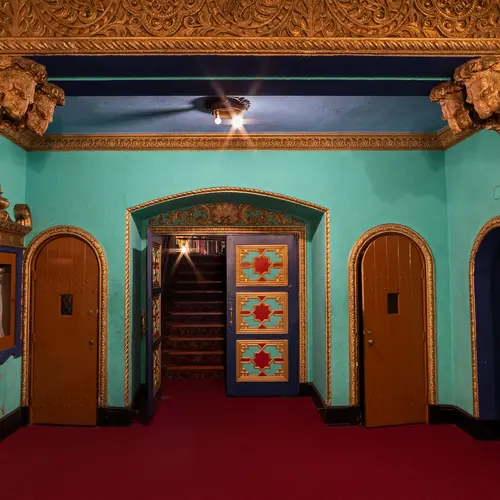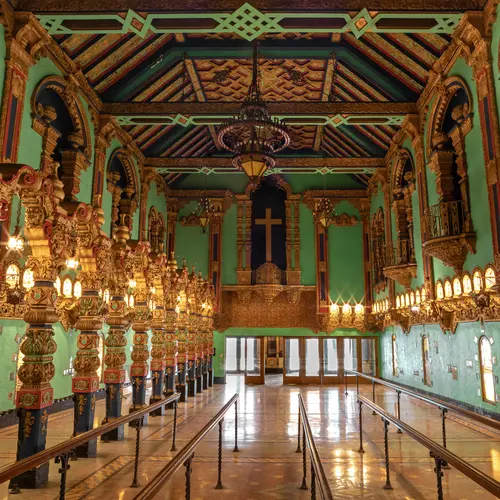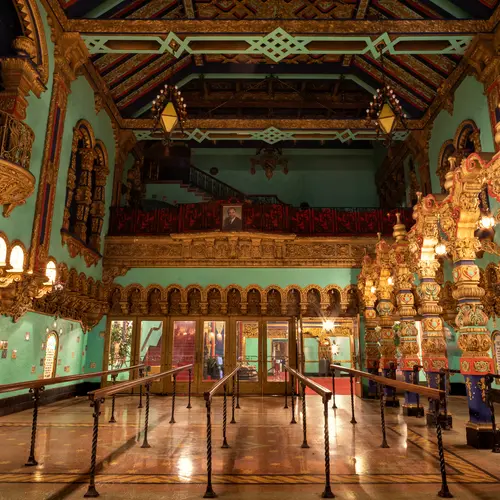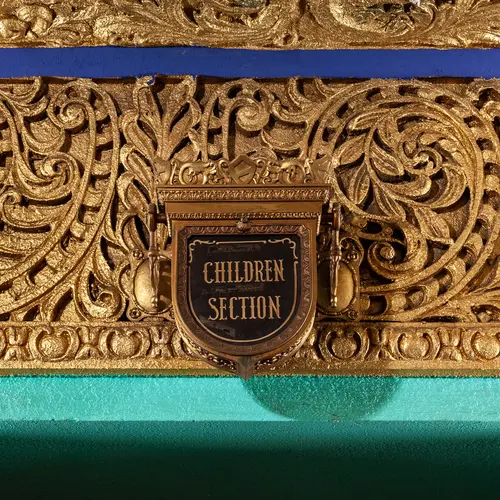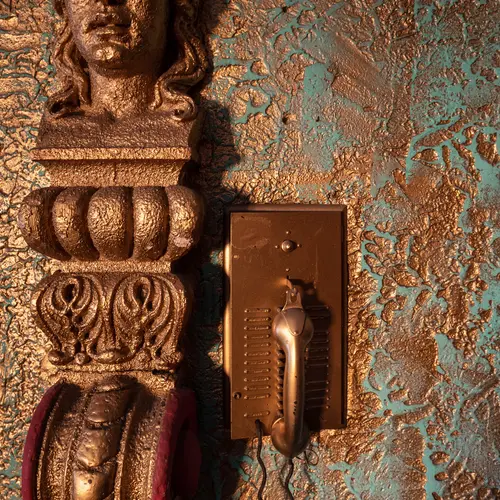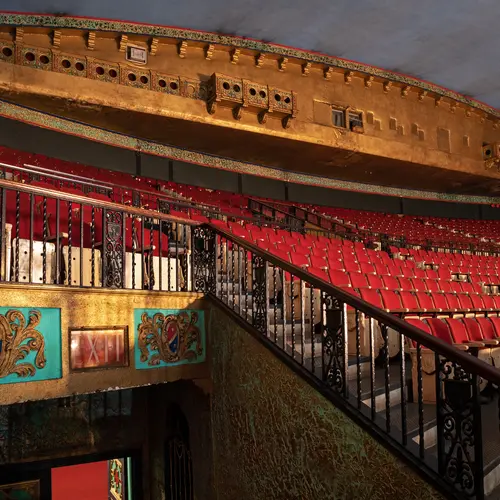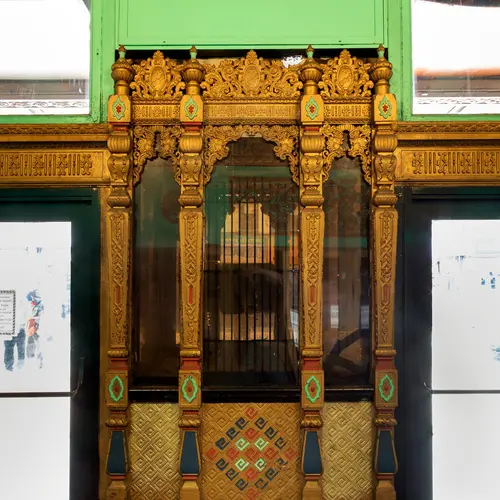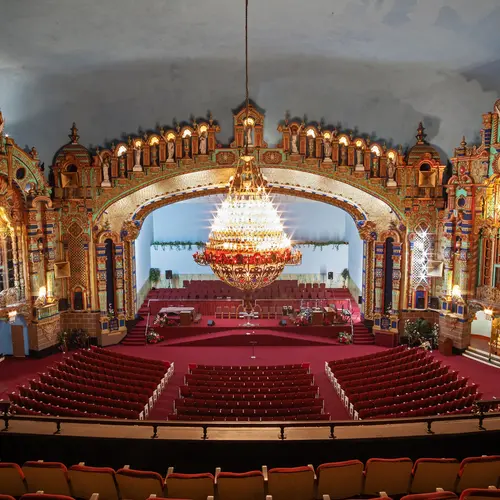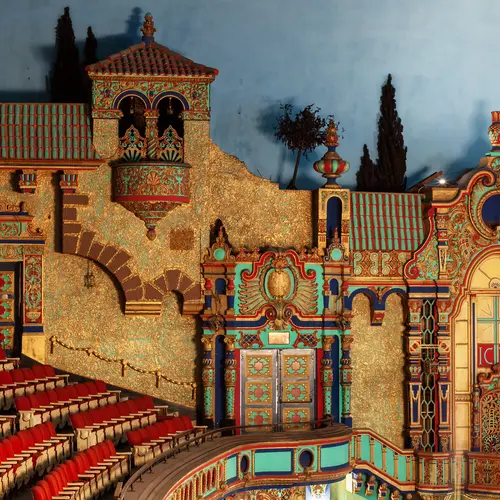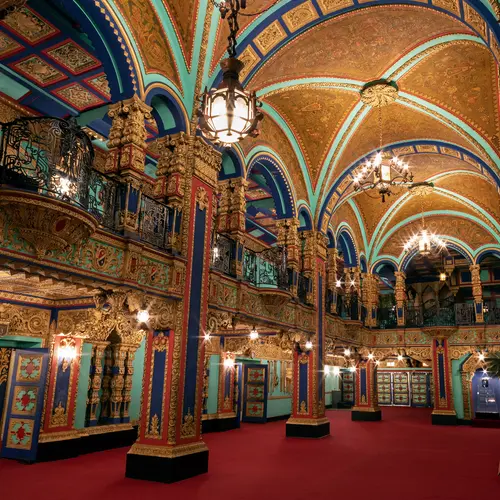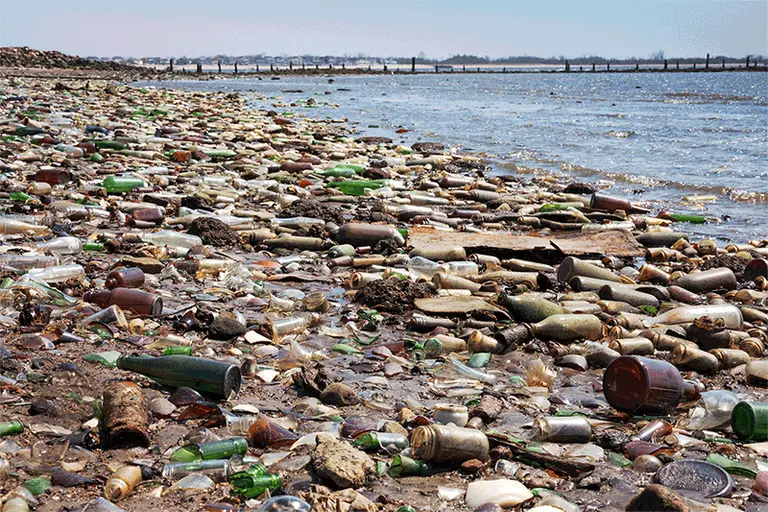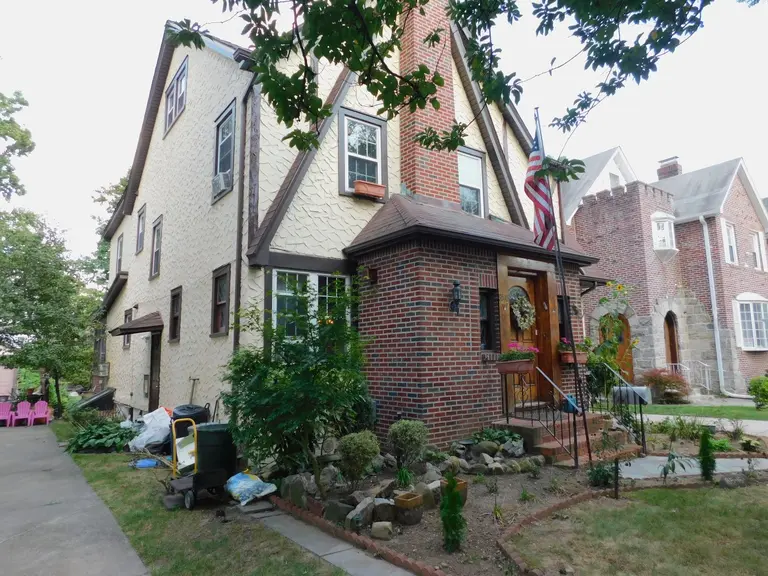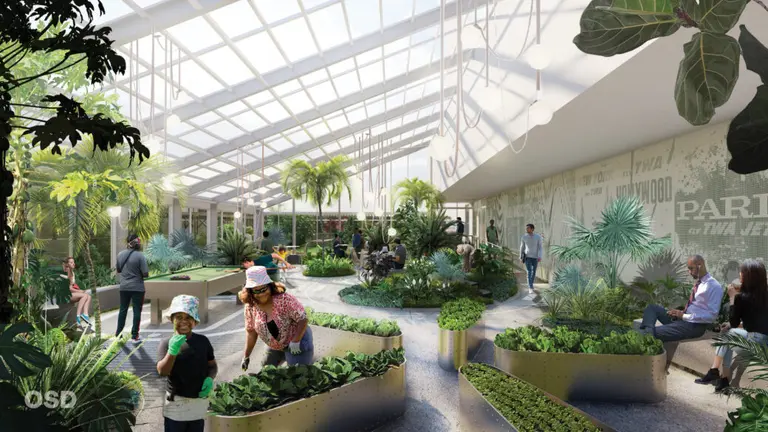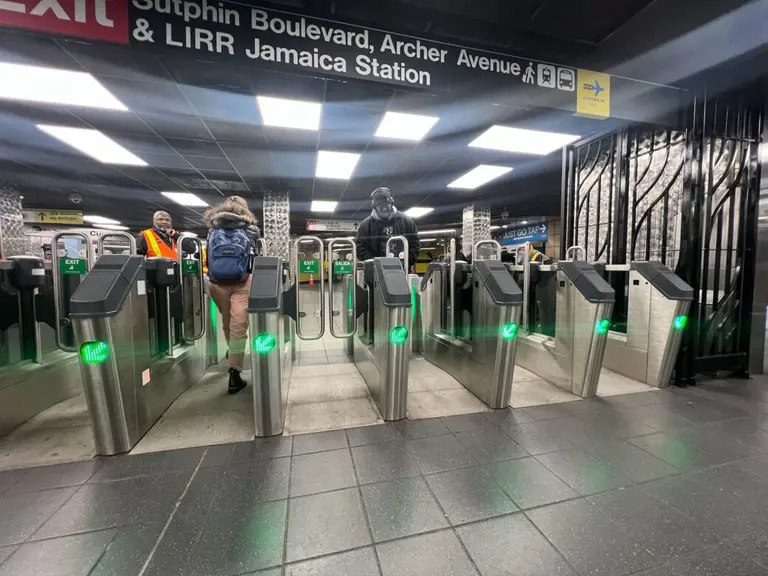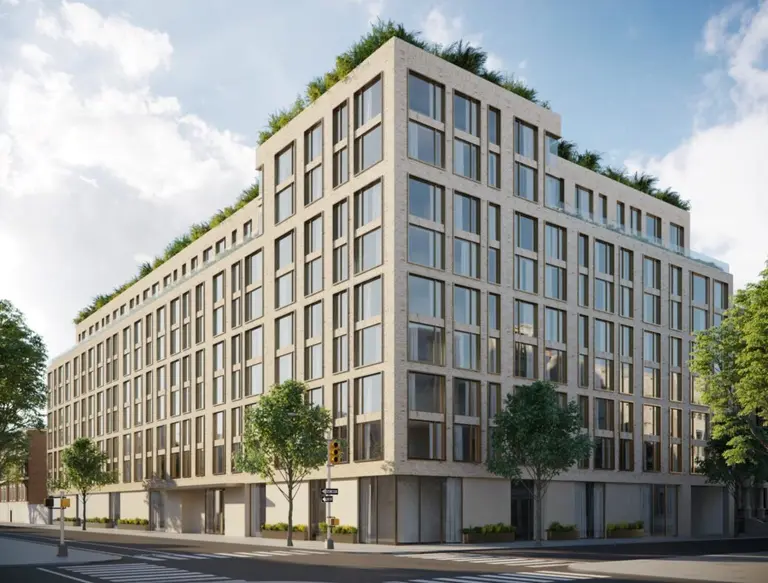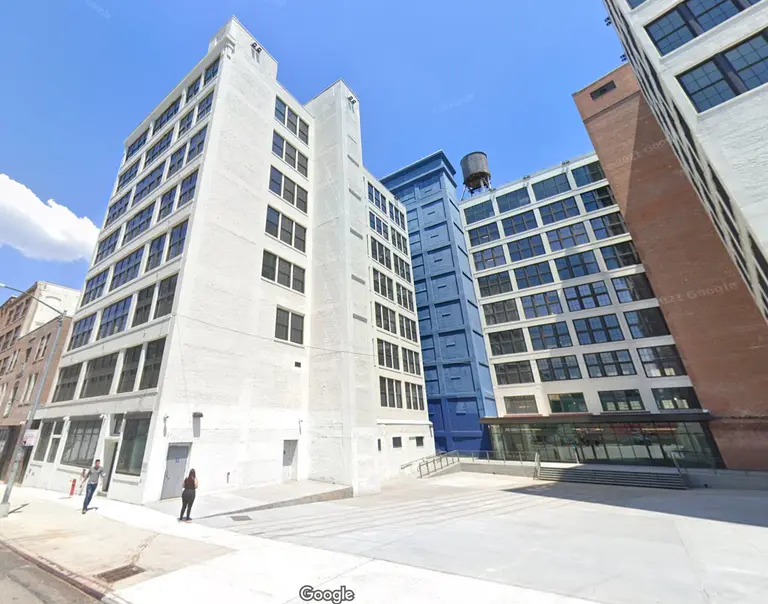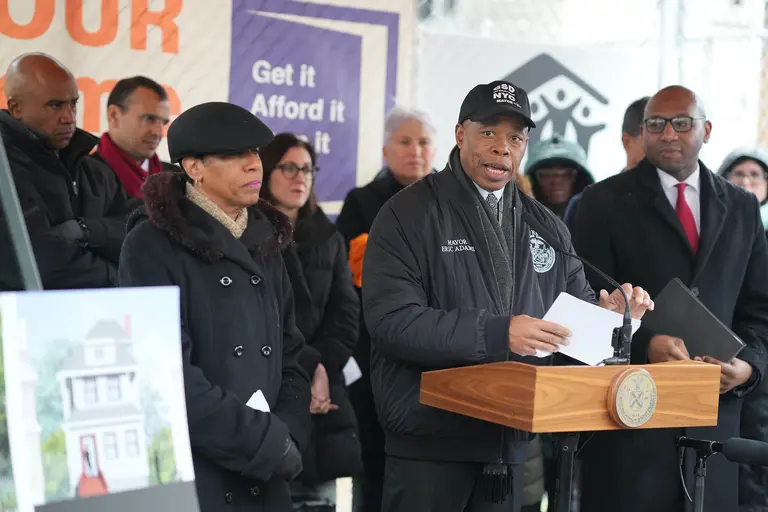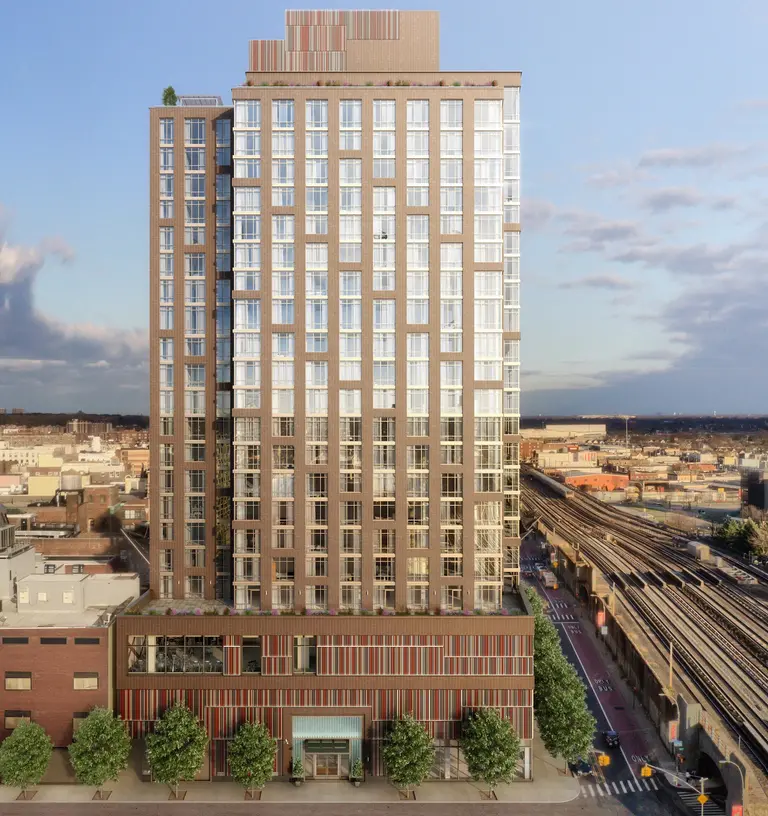Behind the Scenes at Queens’ Loew’s Valencia, once the most successful Wonder Theatre in NYC
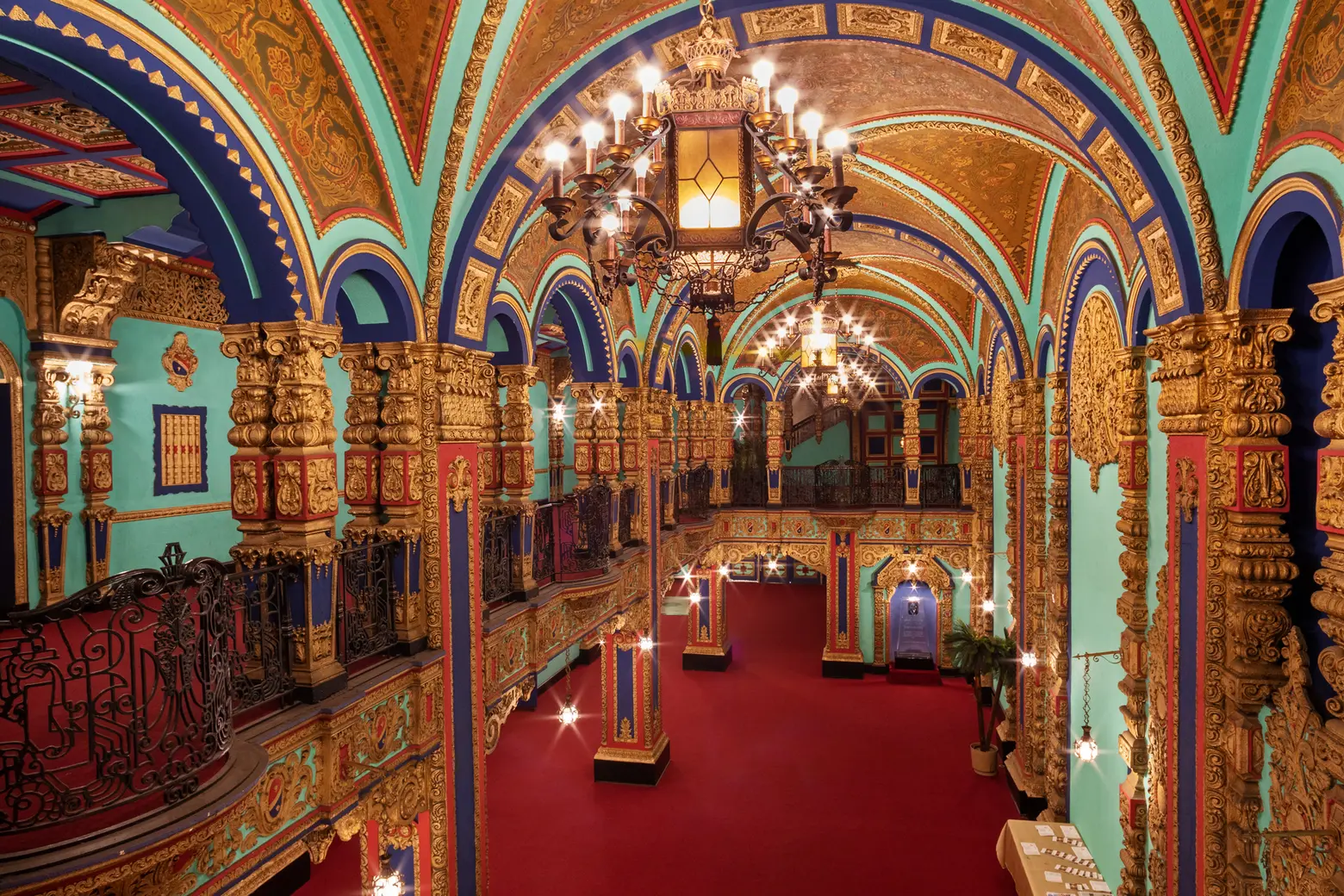
Earlier this year, 6sqft got an exclusive behind-the-scenes tour at the majestic Loew’s Jersey City Theatre, as well as the United Palace Theatre in Washington Heights. In 2016, we joined Untapped Cities and NYCEDC on a tour of Brooklyn Kings Theatre, and just last month, as part of Untapped Cities Insider’s Tours, we were lucky enough to tour and photograph the former Loew’s Valencia Theatre on Jamaica Avenue in Queens, which is now home to the Tabernacle of Prayer for All People church.
The majestic Loew’s Valencia Theatre opened on Saturday, January 12, 1929, as the first, largest, and most famous of the five flagship Loew’s “Wonder” Theatres established in the New York City area from 1929-30. All of the grand movie palaces were built by Marcus Loew of the Loew’s Theatres chain to establish the firm as a leader in film exhibition and to simultaneously serve as a fantastical yet affordable escape for people of all classes from the tedium and anxieties of their daily lives. The Valencia most definitely did not shy away from this fantastical approach, with its Spanish/Mexican Baroque architecture, gilded ornamentation, rich jewel-tone colors, and elaborate carvings.
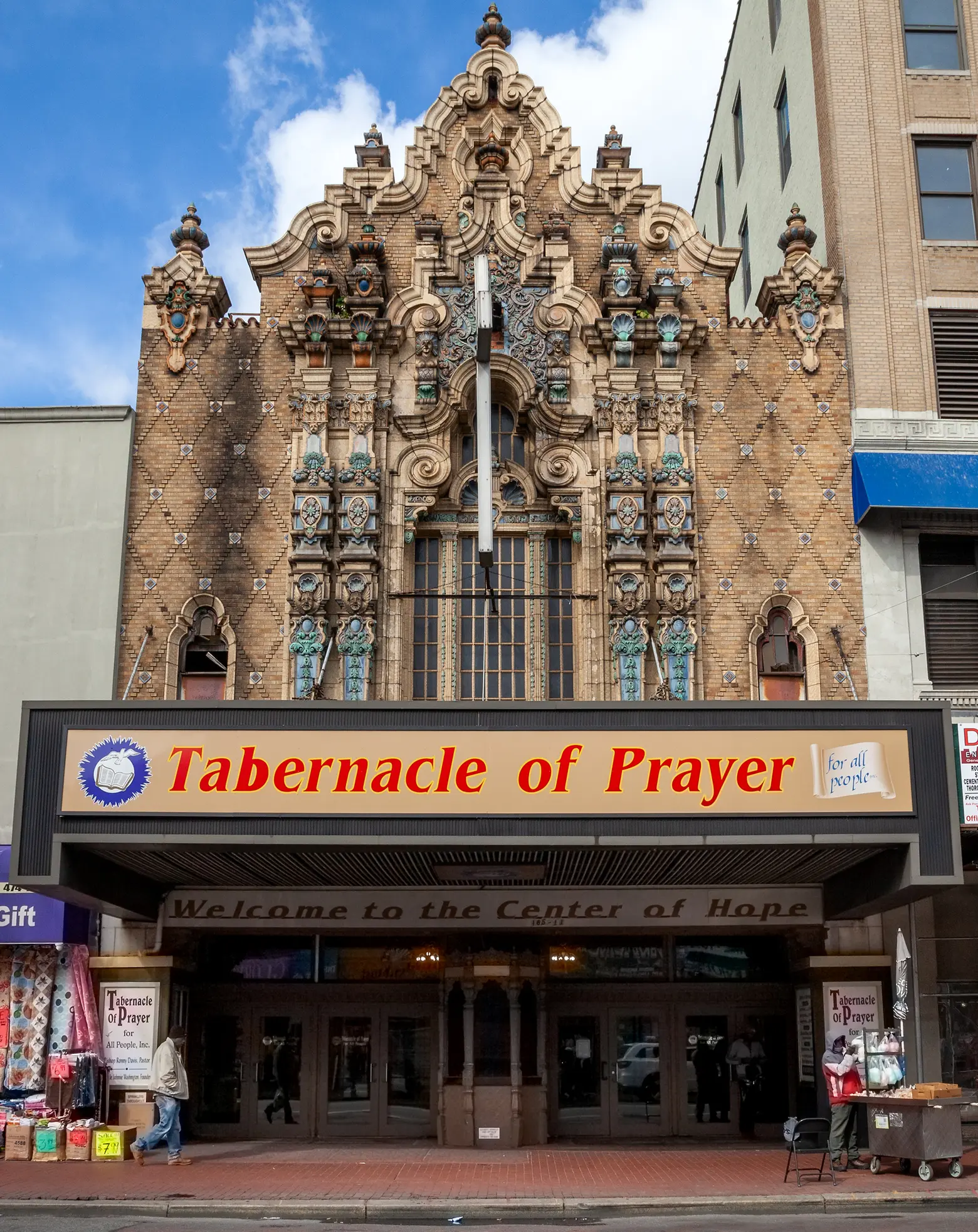
The other Wonder Theatres, which amazingly still stand today, include Brooklyn’s Kings Theater (1929), Bronx’s Paradise Theater (1929), Manhattan’s United Palace Theater (1930), and Loew’s Jersey City (1929). When the Valencia initially opened in 1929, the audience would see a combination of vaudeville and live acts as well as motion pictures and music provided by the Robert Morton ‘Wonder” pipe organ with four keyboards (manuals) and 23 ranks of pipes. The inaugural program at the theatre was Monte Blue in “White Shadows in the South Seas’ plus vaudeville acts on stage.
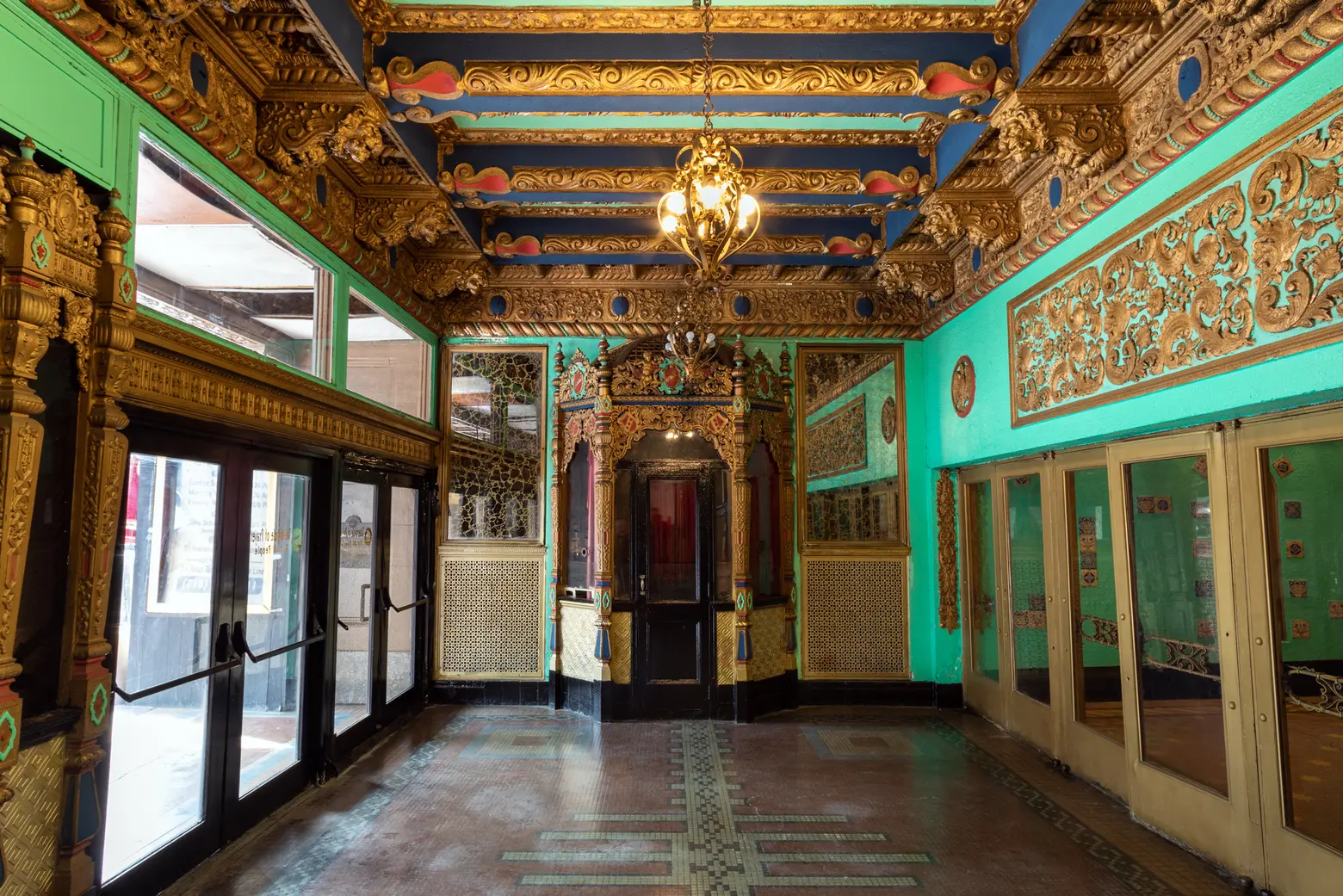
By early 1935, the Valencia stopped its stage shows and replaced them with double feature movies. Until the 1960s, the Loew’s Valencia Theatre was the most successful movie theatre in Queens. But in 1977, due to a combination of loss of revenue from shrinking audiences and expensive overhead, the theater closed. The last movie shown at the theater on May 26, 1977 was “The Greatest” starring Ernest Borgnine. The movie theater was abandoned by the Loew’s Corporation, but later that year, Reverend Johnnie Washington, who saw its beauty, “an atmosphere that makes you feel you are at someplace sacred,” took over the theater for his Tabernacle of Prayer for All People church and began to restore it for his congregation.
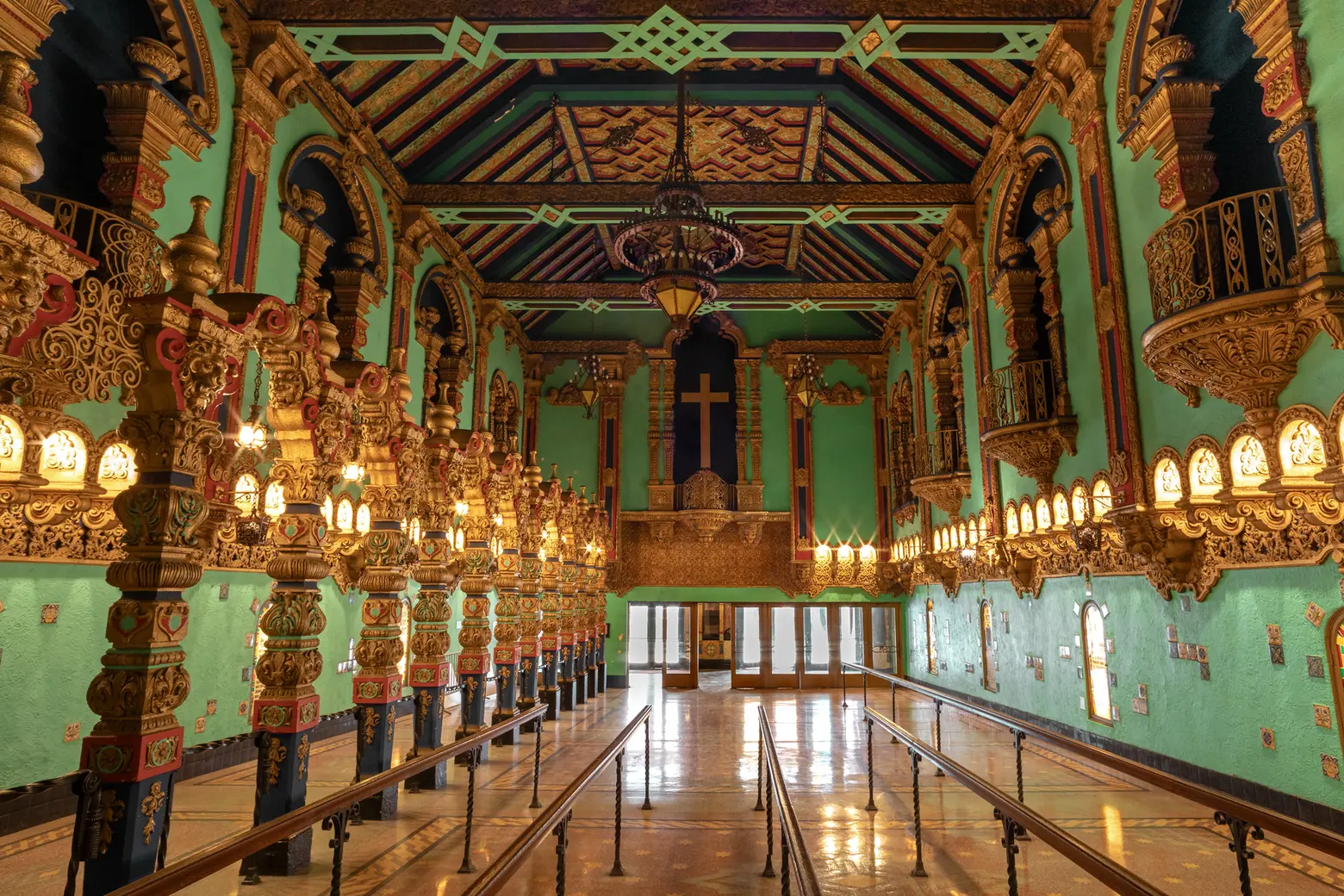
As part of the Untapped Cities Insiders members-only club, which gives free access to NYC’s most off-limits places and events from the city’s leading cultural institutions, we were able to listen to Sister Forbes, the church’s pastoral secretary, as she recounted the history of the Valencia Theatre, how the Loew’s Corporation donated the abandoned theatre building to the Tabernacle of Prayer for All People congregation, and the church’s efforts to bring it back to its former grandeur:
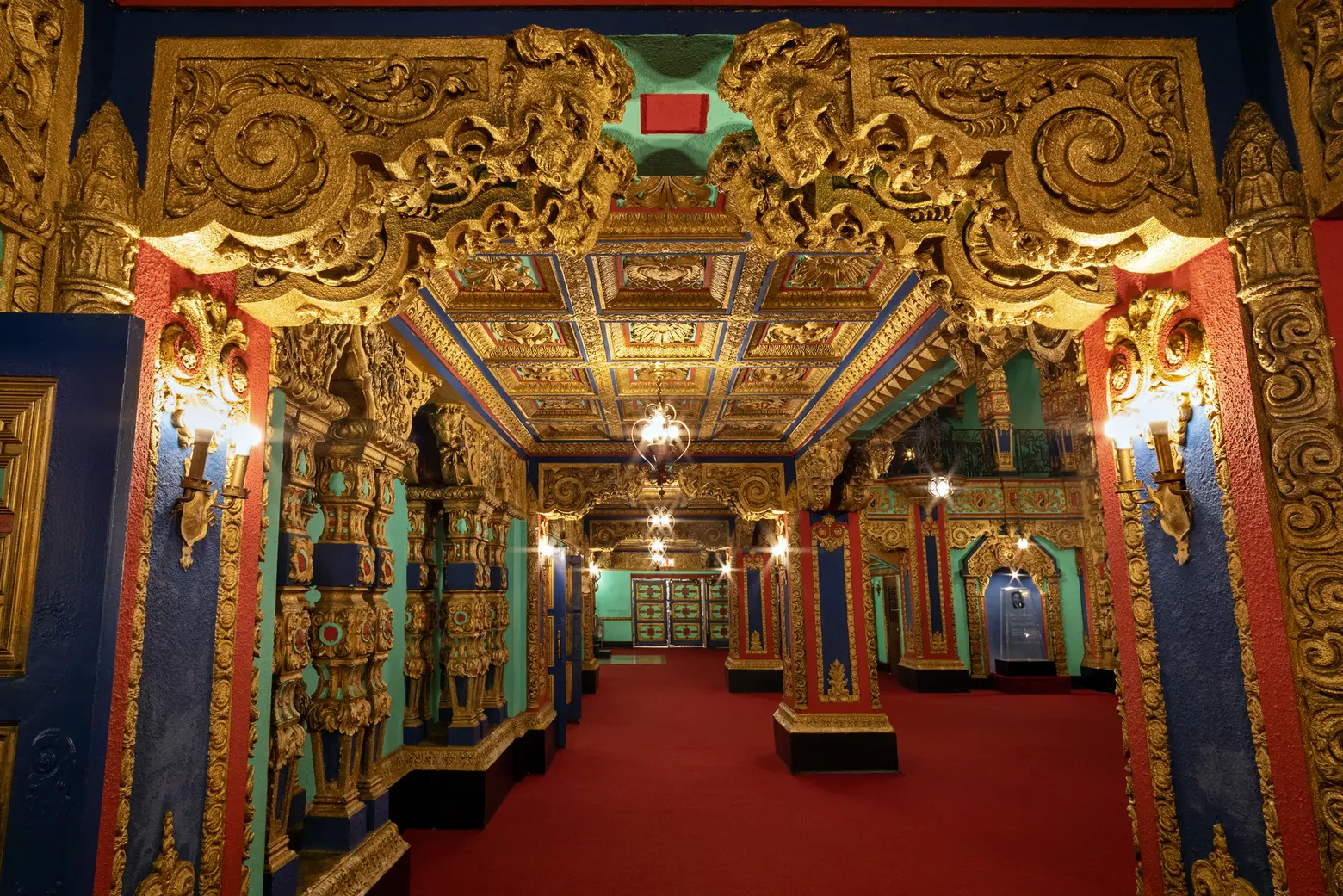
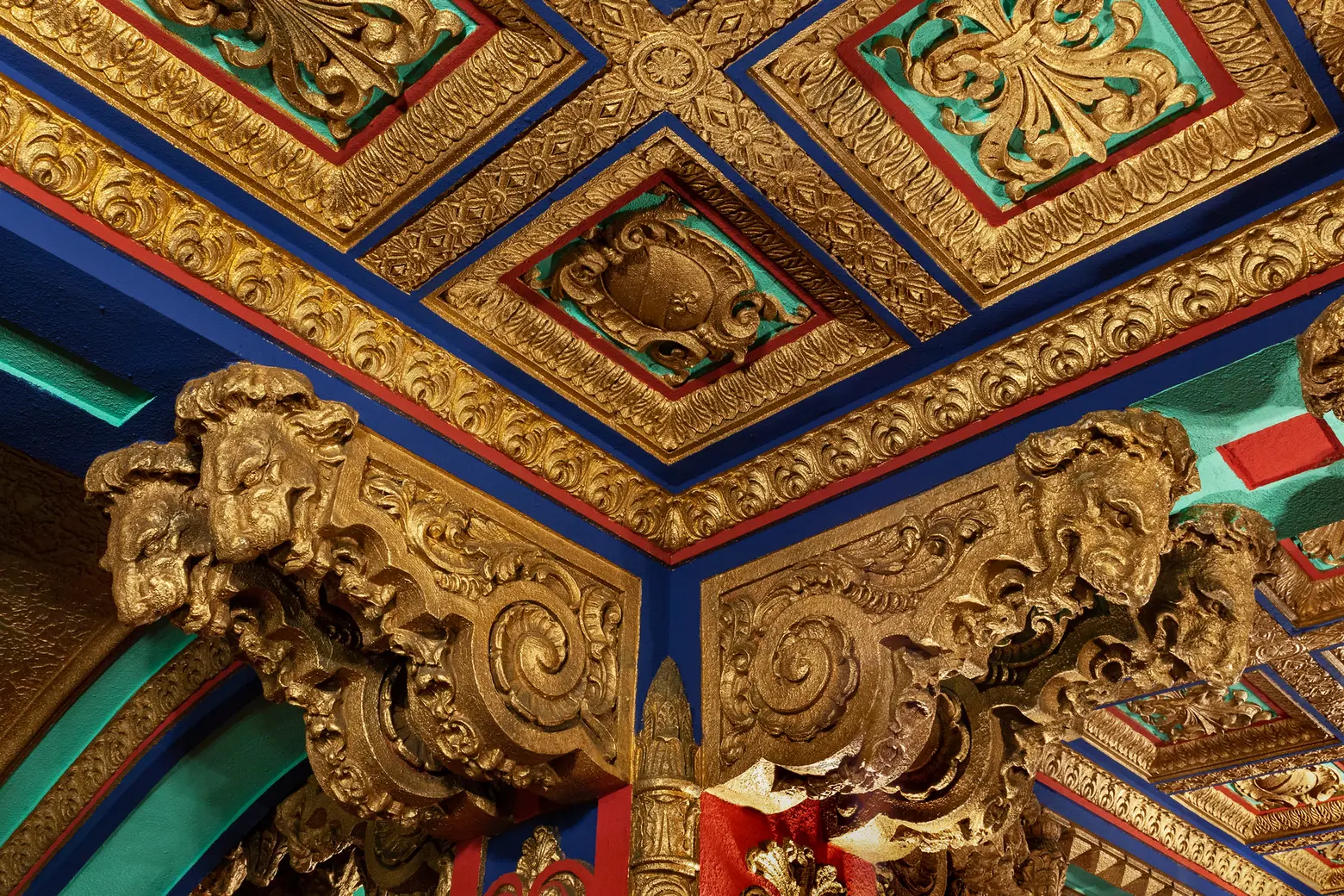
The idea of creating Wonder theaters was originally developed by the Paramount theatre chain but Marcus Loew of Loew’s Theatres took over the project in the New York area. Marcus Loew was also the founder of Metro Goldwyn-Mayer Film Studio and the symbol for Metro Goldwyn is the lion that you can see statues of all throughout the Valencia (I was also told that the word Löwe in German means lion).
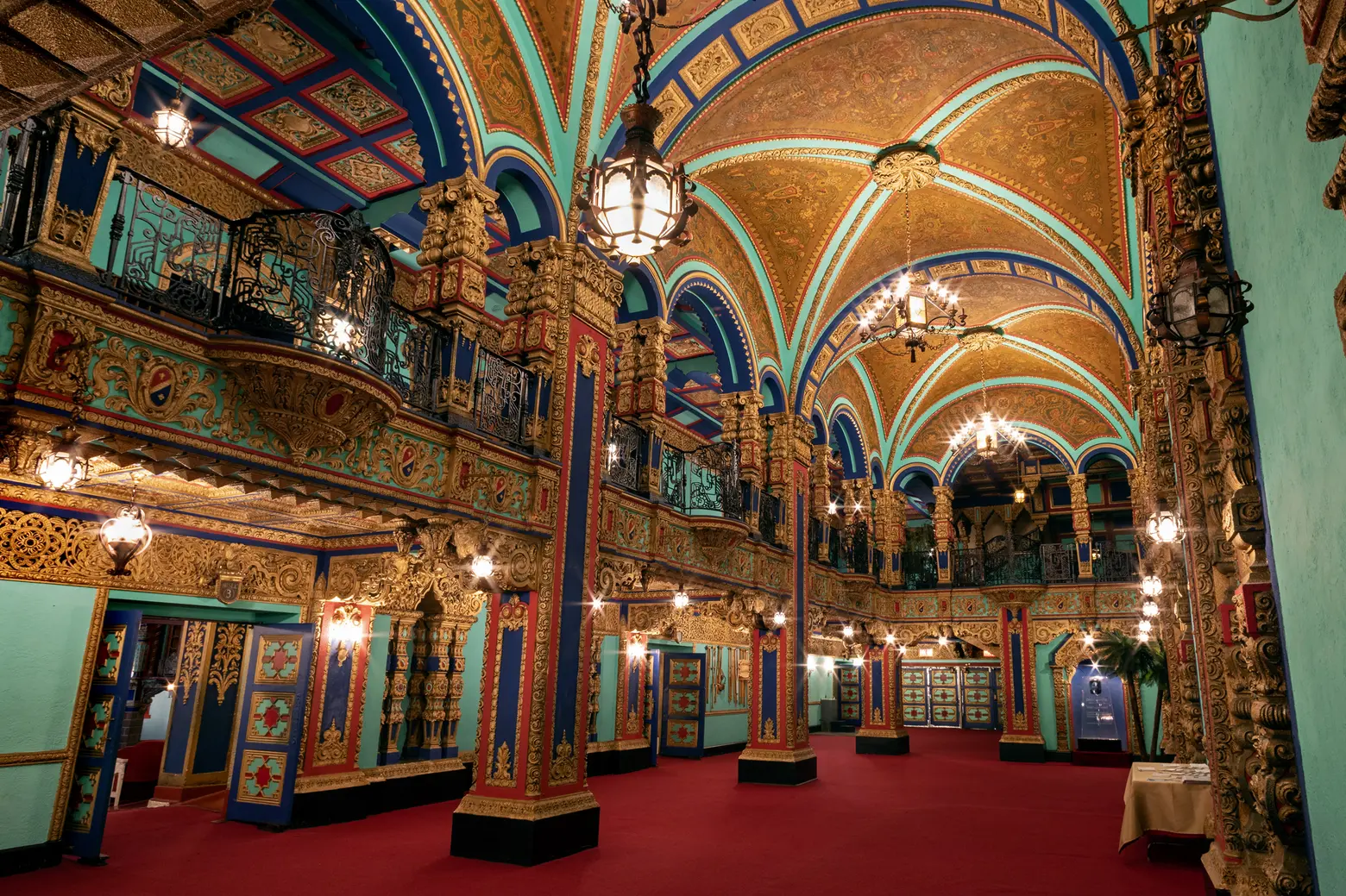
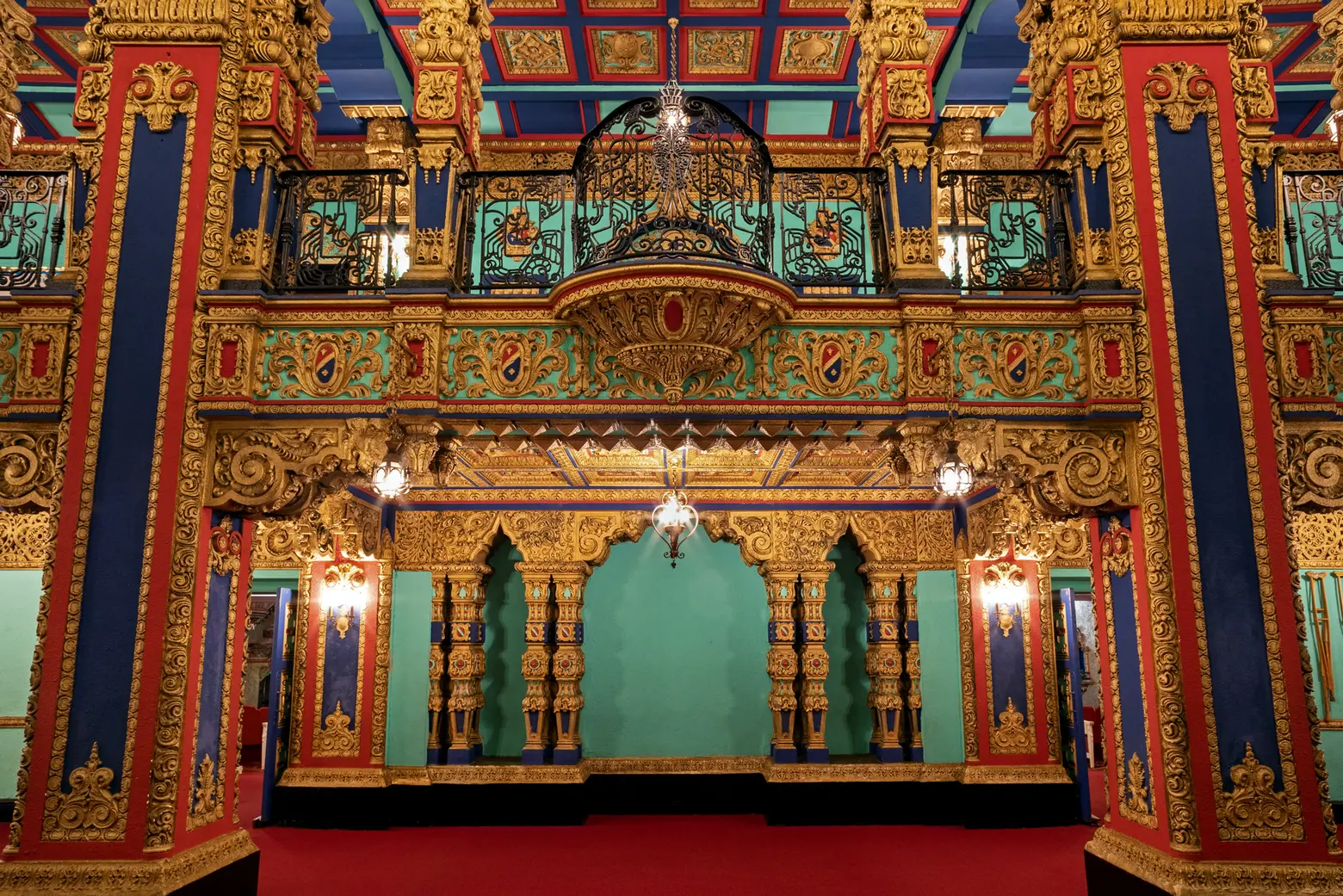
Loew hired architect John Eberson, who designed over 100 theaters around the United States, to design two of the New York area Wonder Theatres–the Valencia and Bronx’s Paradise Theatre. Eberson wanted all of his theatres to have an “atmosphere” with over-the-top, elaborate décor. Most say the Valencia is a twin to the Paradise, but that it’s a little bit grander.
Just coming into the entranceway of the building, you can see how grand it is! The interior is a mix of Spanish and Mexican styles and in the lobby, you can see a vaulted ceiling with arches, many elaborate columns and balconies, and even original light fixtures.
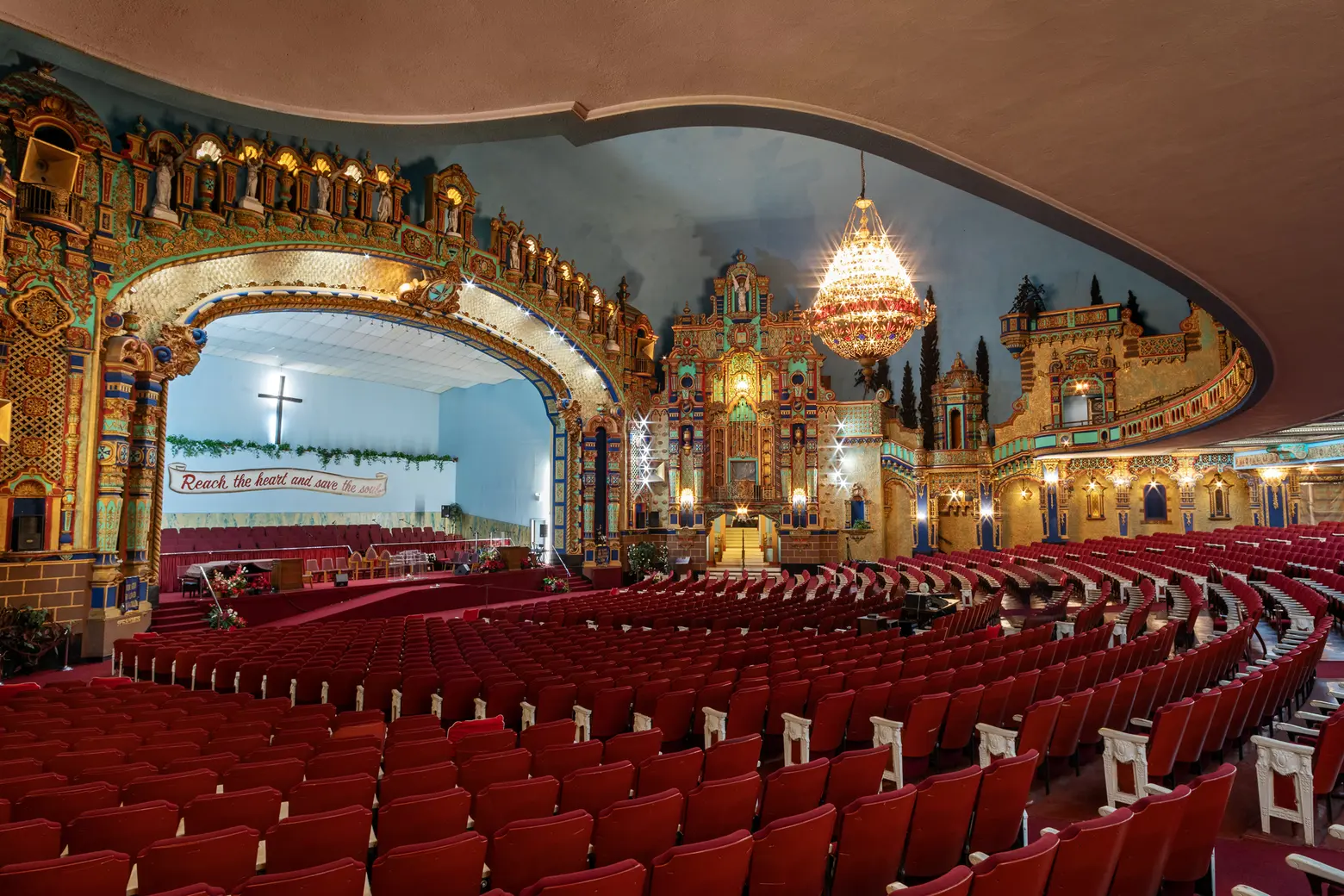
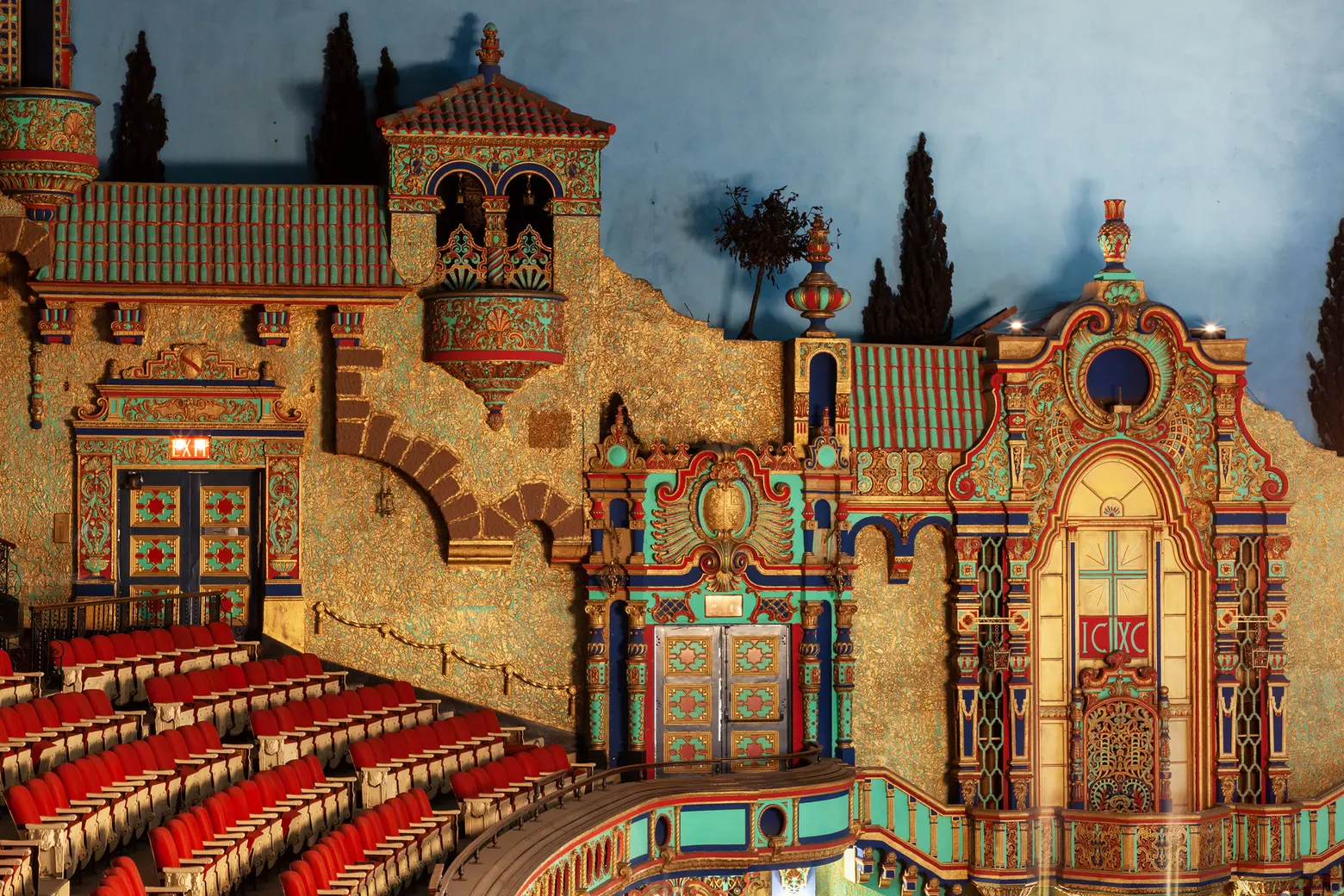
The walls of the center stage area and sides of the auditorium are lined with facades of buildings with balconies, terraces, turrets, and even towering trees behind the buildings, all creating the sensation that you are seated at the center of a courtyard garden.
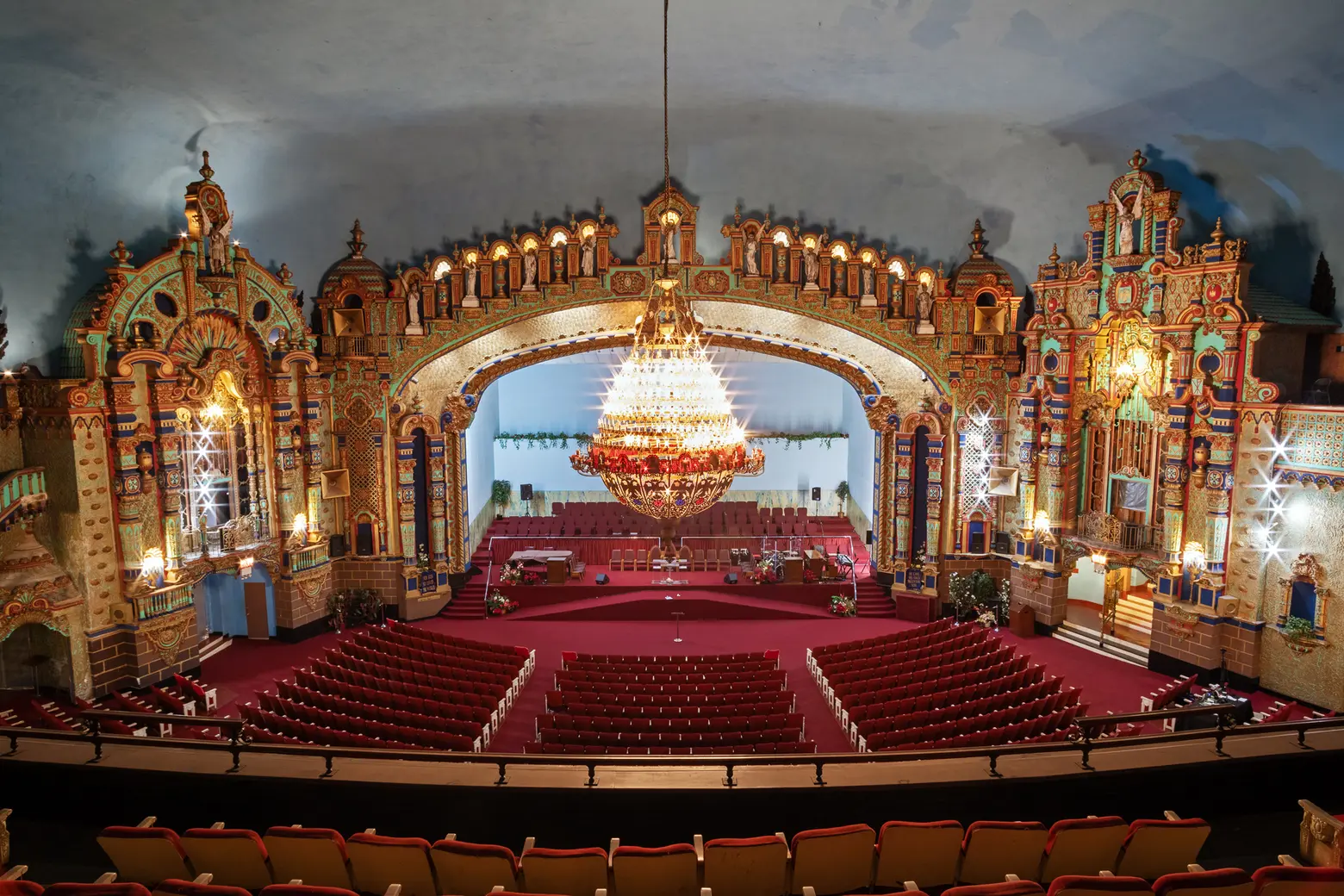
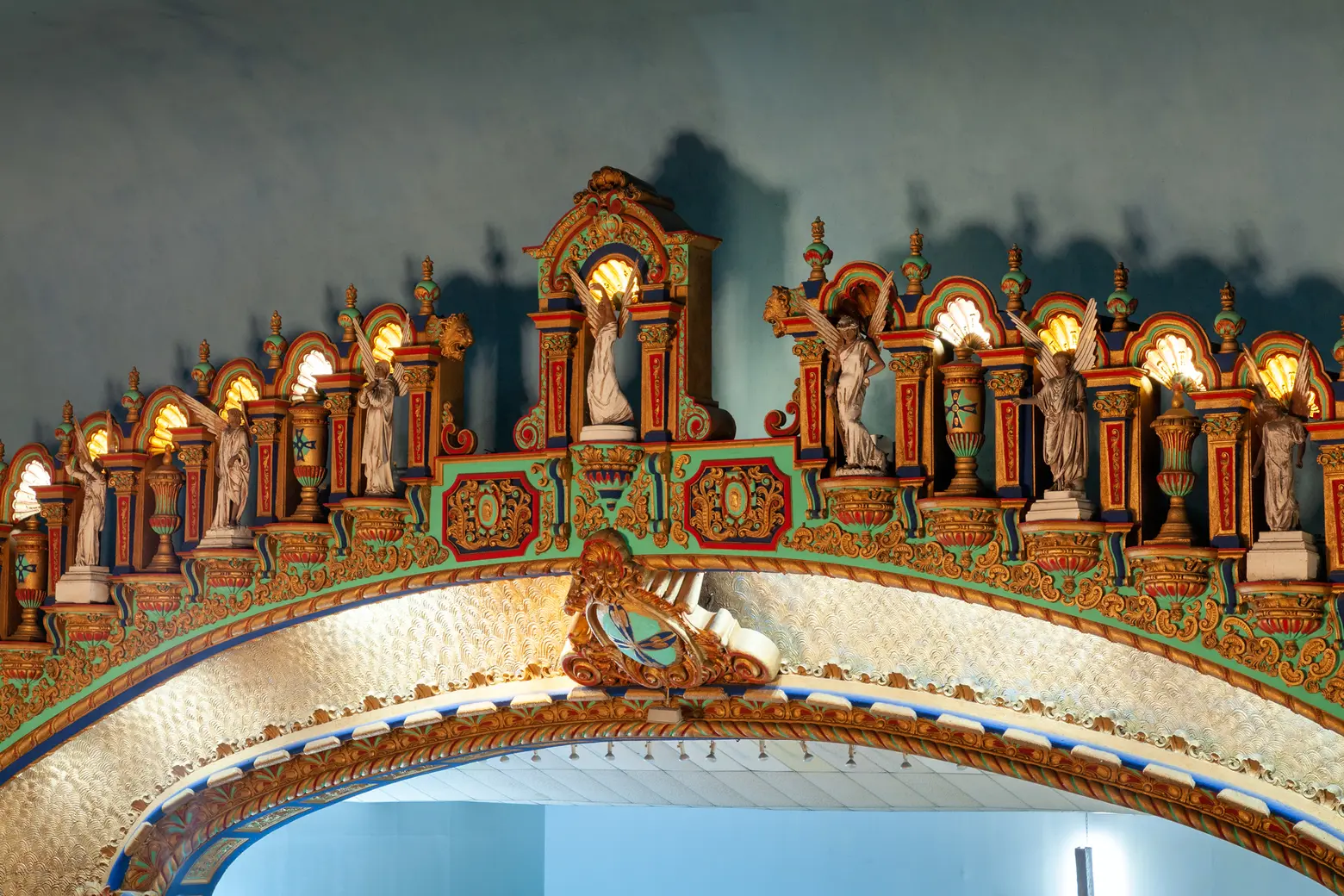
The ceiling of the auditorium is even painted blue with faint clouds and tiny lights are inset to simulate twinkling stars. It looks like you are sitting looking up at the sky. My brother, Jerome is the one who climbed the catwalk by himself and replaced over 100 bulbs so that the twinkling stars could shine again for our congregation.
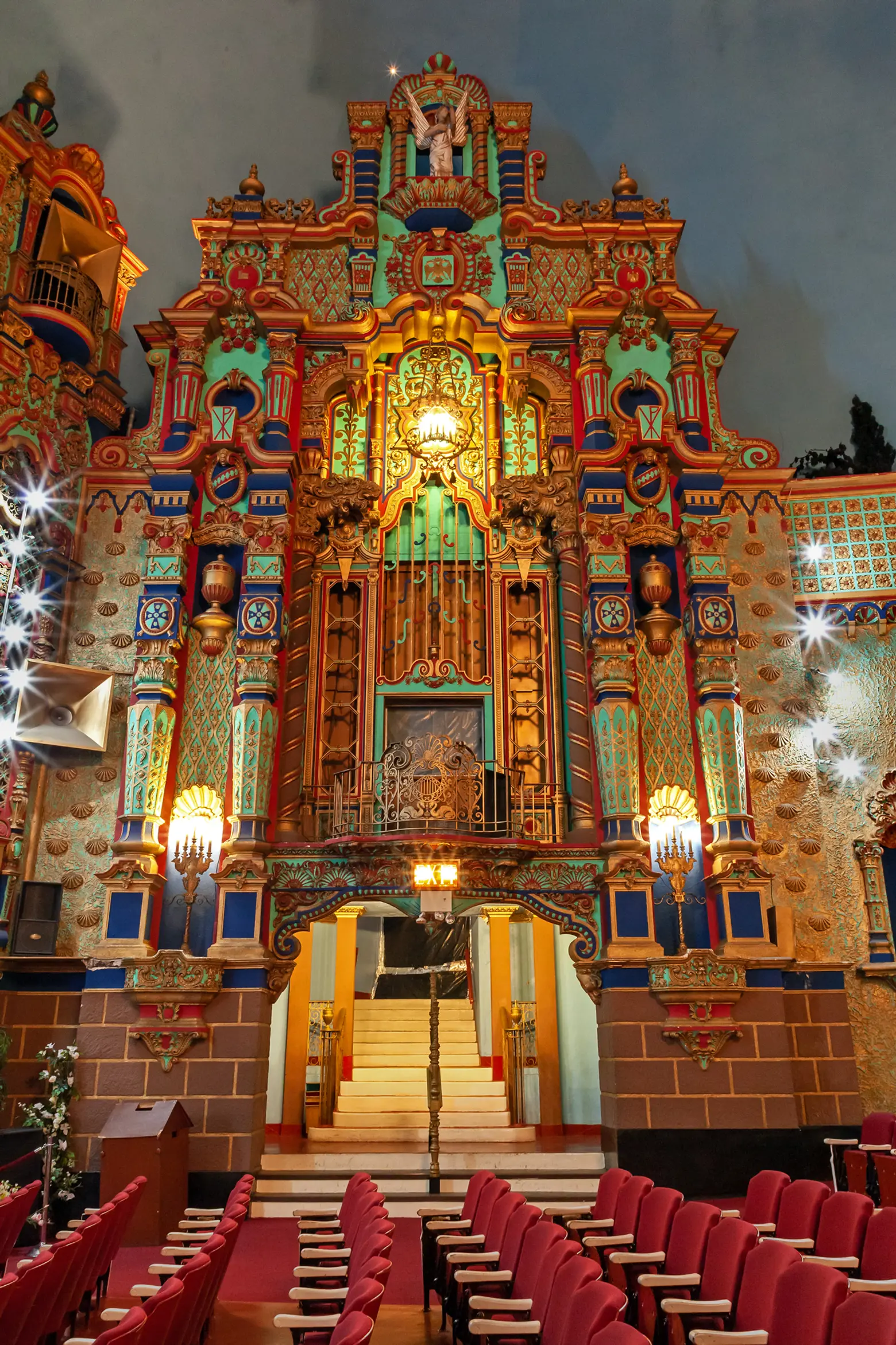
The original Wonder organ that was located in the orchestra pit and rose up when it was played during live shows was removed in the 1960s and can now be found inside the Balboa Theatre in San Diego, California. Its refurbishment cost $1 million and it debuted at the Balboa in February 2009.
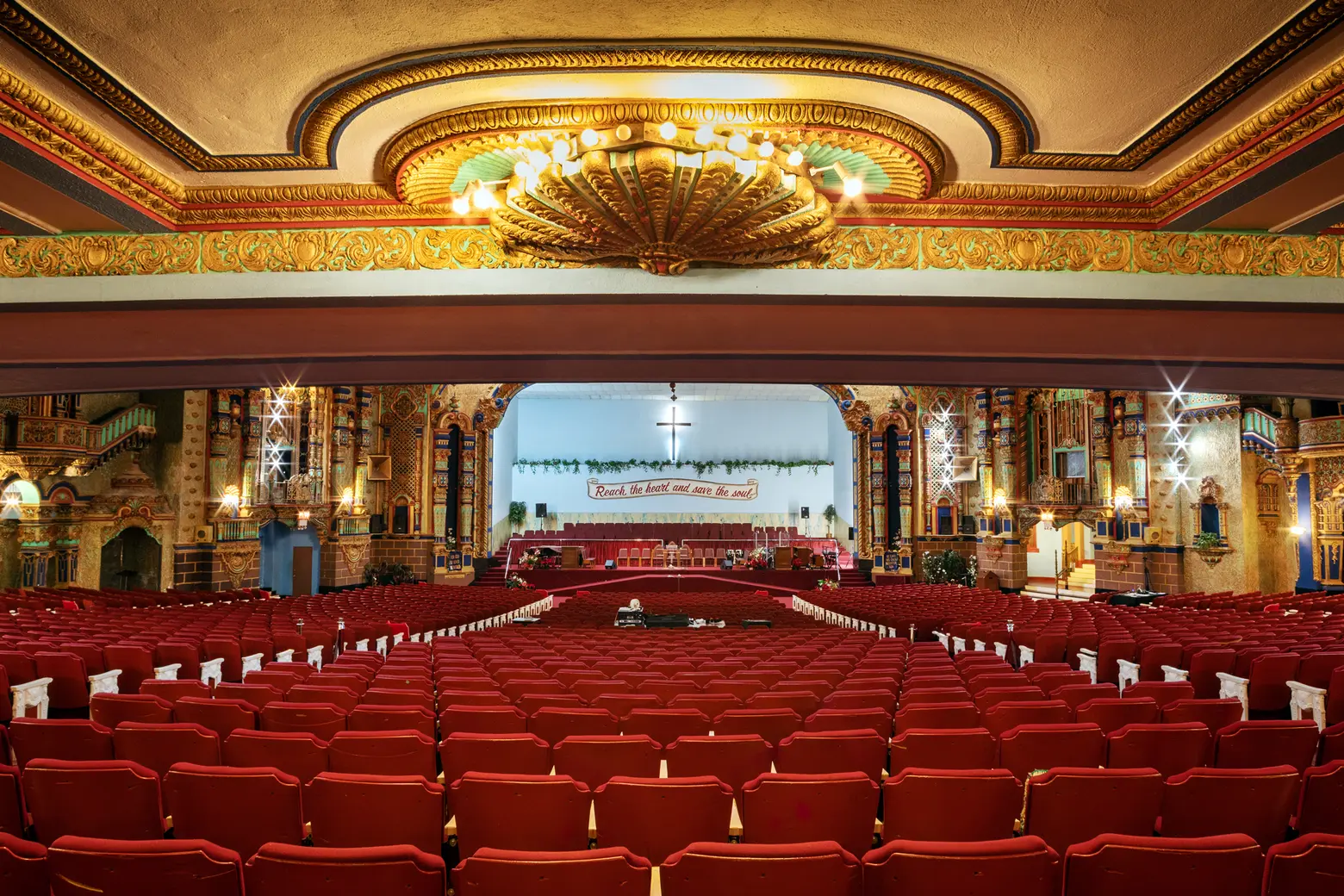
The original dressing room for the theatre now serves as my office and the staff office. Upstairs, if you turn around while in the auditorium, you can see where the old projection room for showing movies was located.
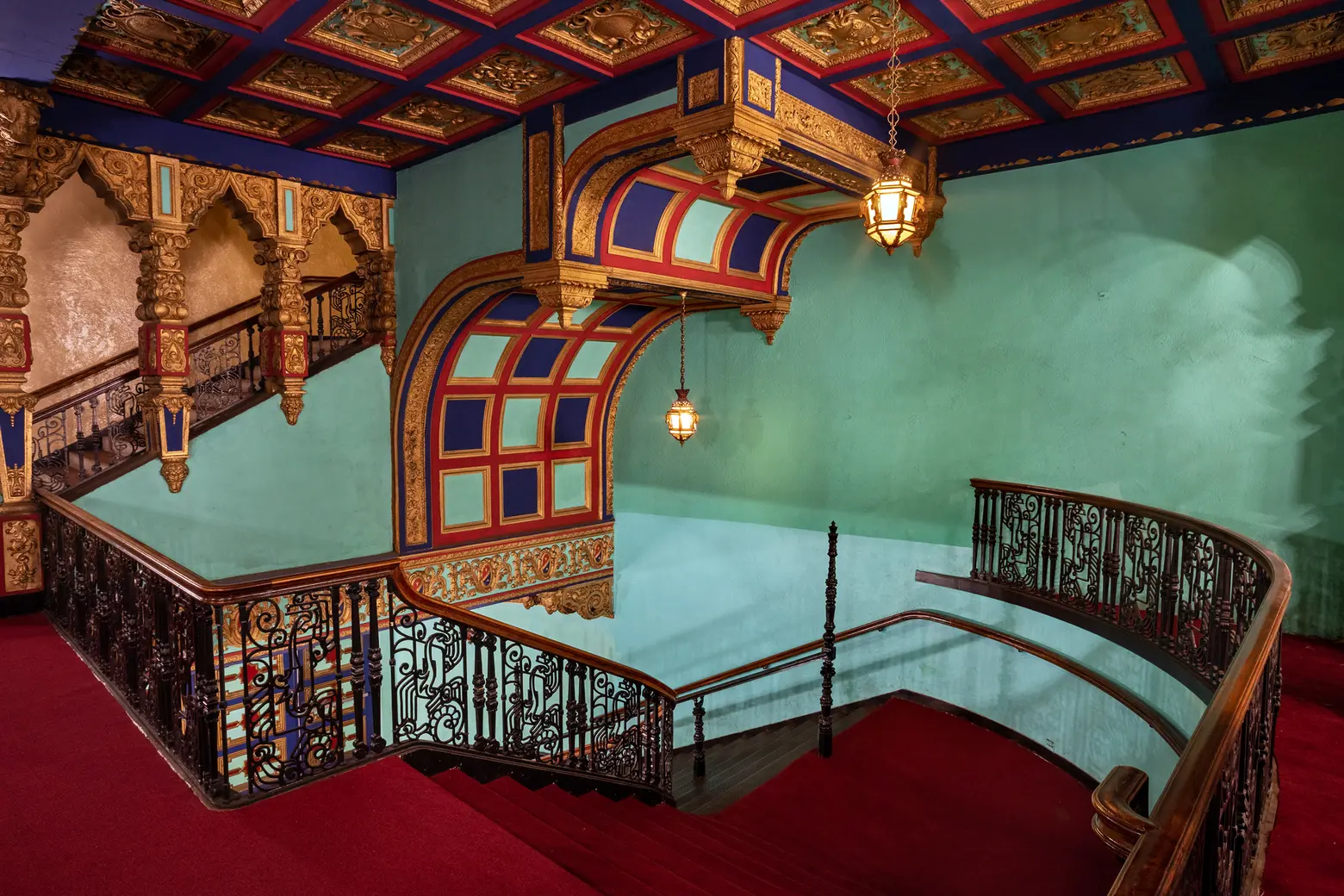
When our church was given the building in 1977 from the Loew’s Corporation, it had to be recorded as a business transaction. Our founder, Apostle Johnnie Washington paid exactly $1.00, but it was given to us “as is” and we were responsible for all the renovation needed. When we took over, this theatre was an eyesore and was in total disrepair.
There was garbage strewn everywhere because it had been abandoned by Loew’s. The Valencia was not doing well in the 1970s because it was tough to find a movie that nearly 4,000 people would want to see, and people by that time had VCRs and could sit at home and watch a movie on their TV and not pay to see a movie. Many people just stopped going to the movies and near the end of this theater, the quality of the movies shown here declined and most were Blaxploitation films.
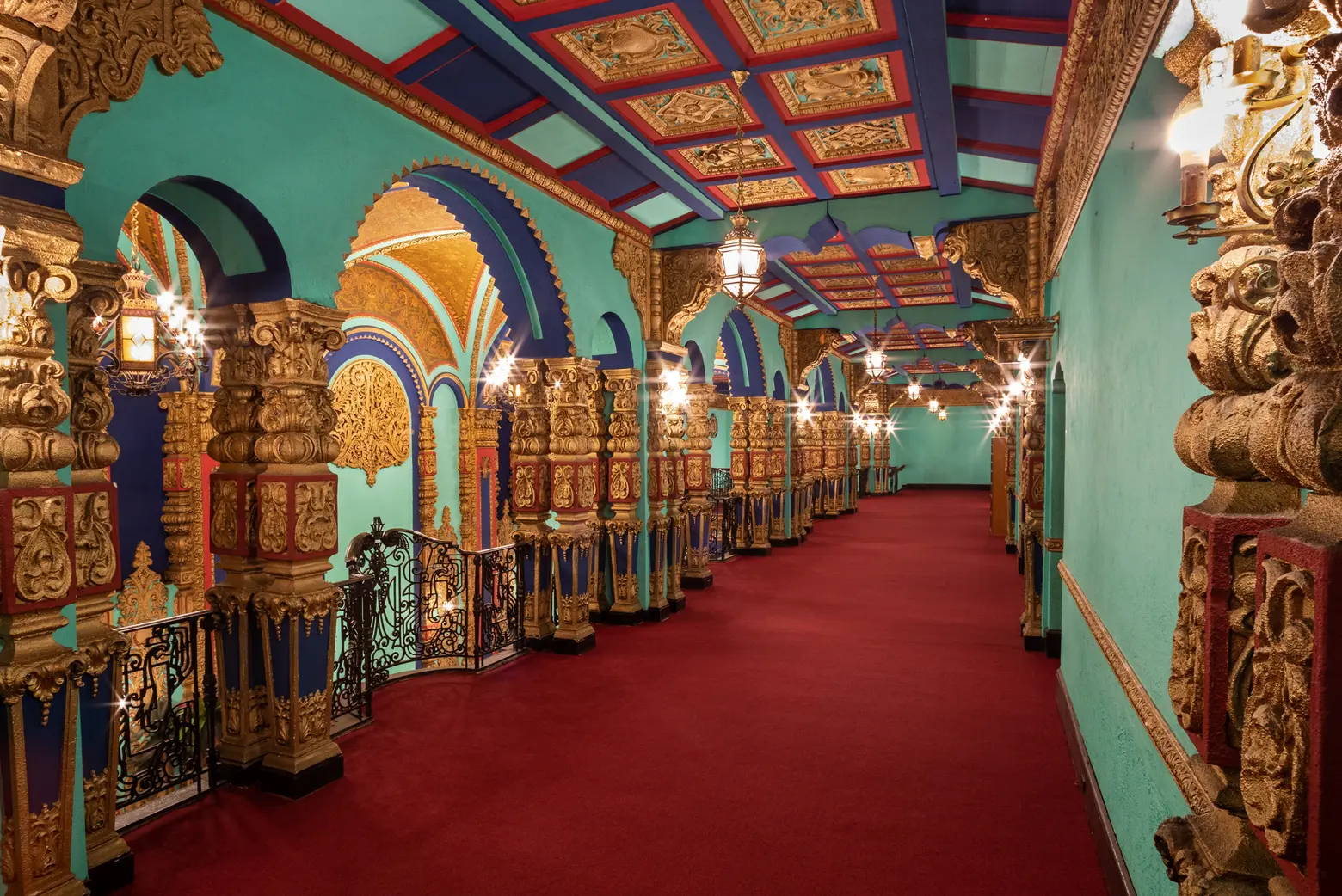
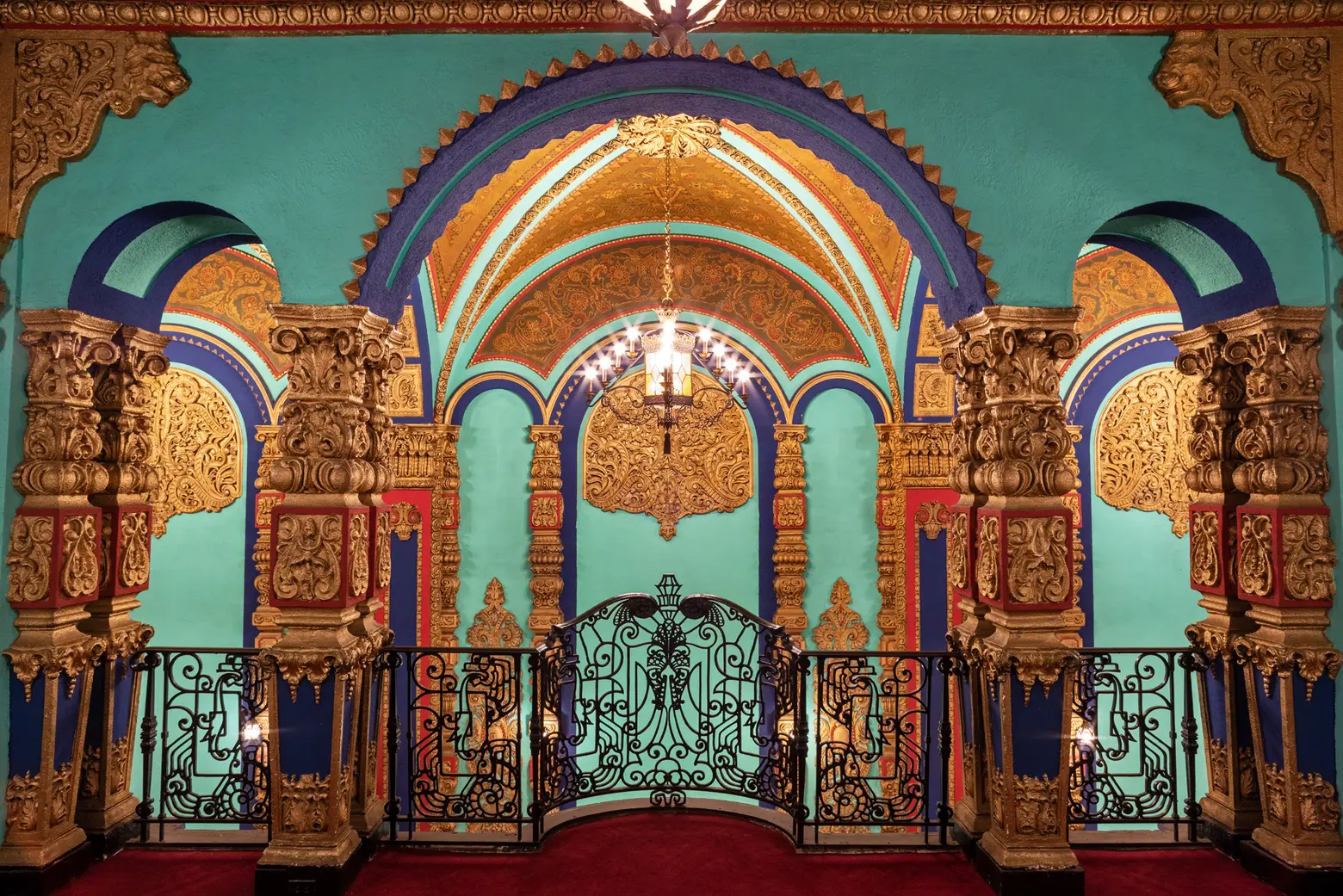
Squatters had come in and made a mess of everything, but the theatre still had all of its original seats and décor. It cost over $200,000 to renovate it and considering in the late 1970s we were predominantly a Black working-class congregation, it was a lot of money. We held fundraisers and reached out to the community for help. Church members donated their time to help restore the theatre, which included painting the interior, replacing the carpeting and changing the seat covers.
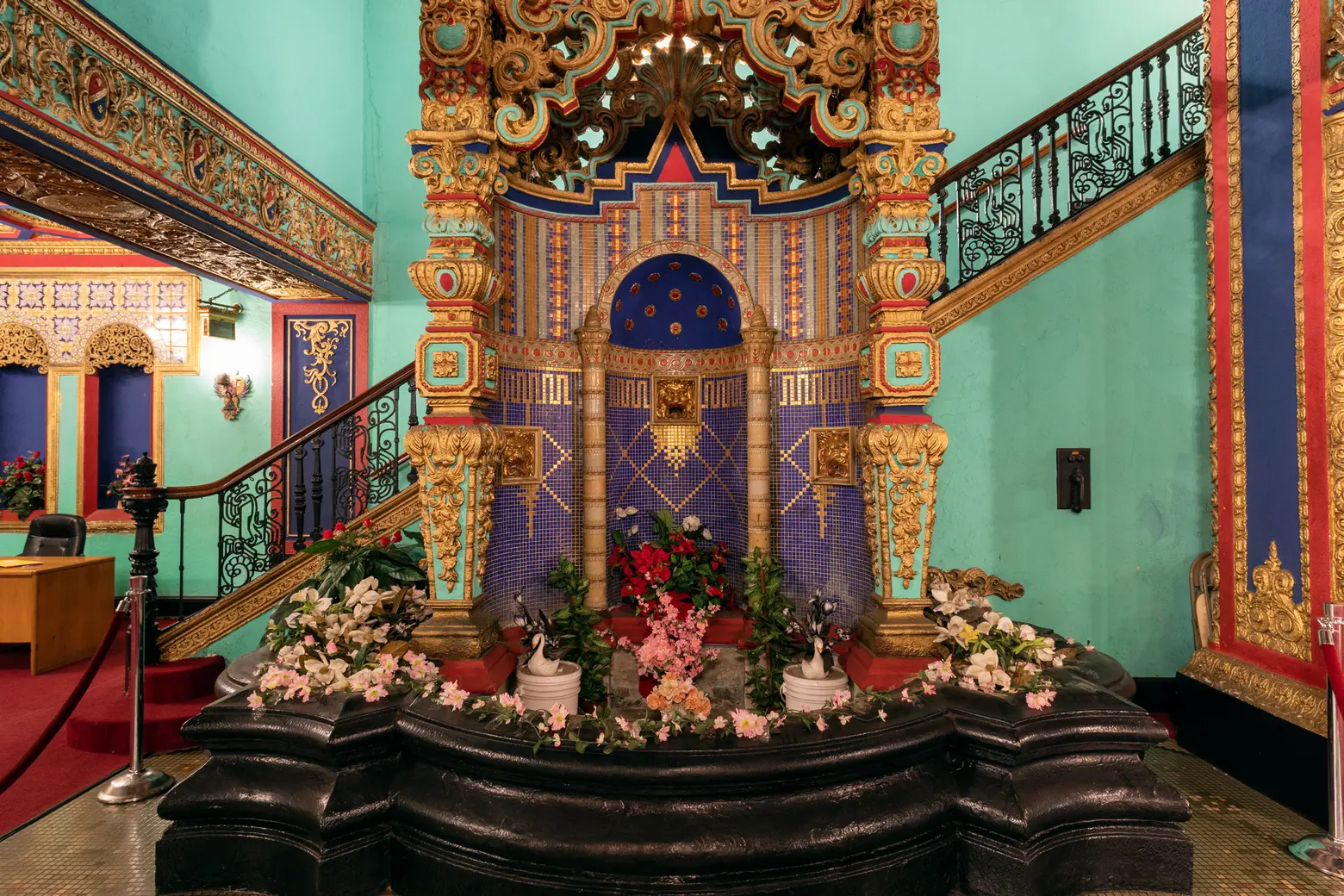
When we repainted the theatre, we kept the colors true to the original as far as we know. For the seat covers, the women cut out patterns and the men sewed them on. But what you see today is exactly how the theater was when it was first built. Thankfully, in 1929, they built things to last and this building structurally was very sound. We have survived every major storm. In fact, most recently during Superstorm Sandy, we even had members of our congregation who wanted to come inside and stay here during the storm.
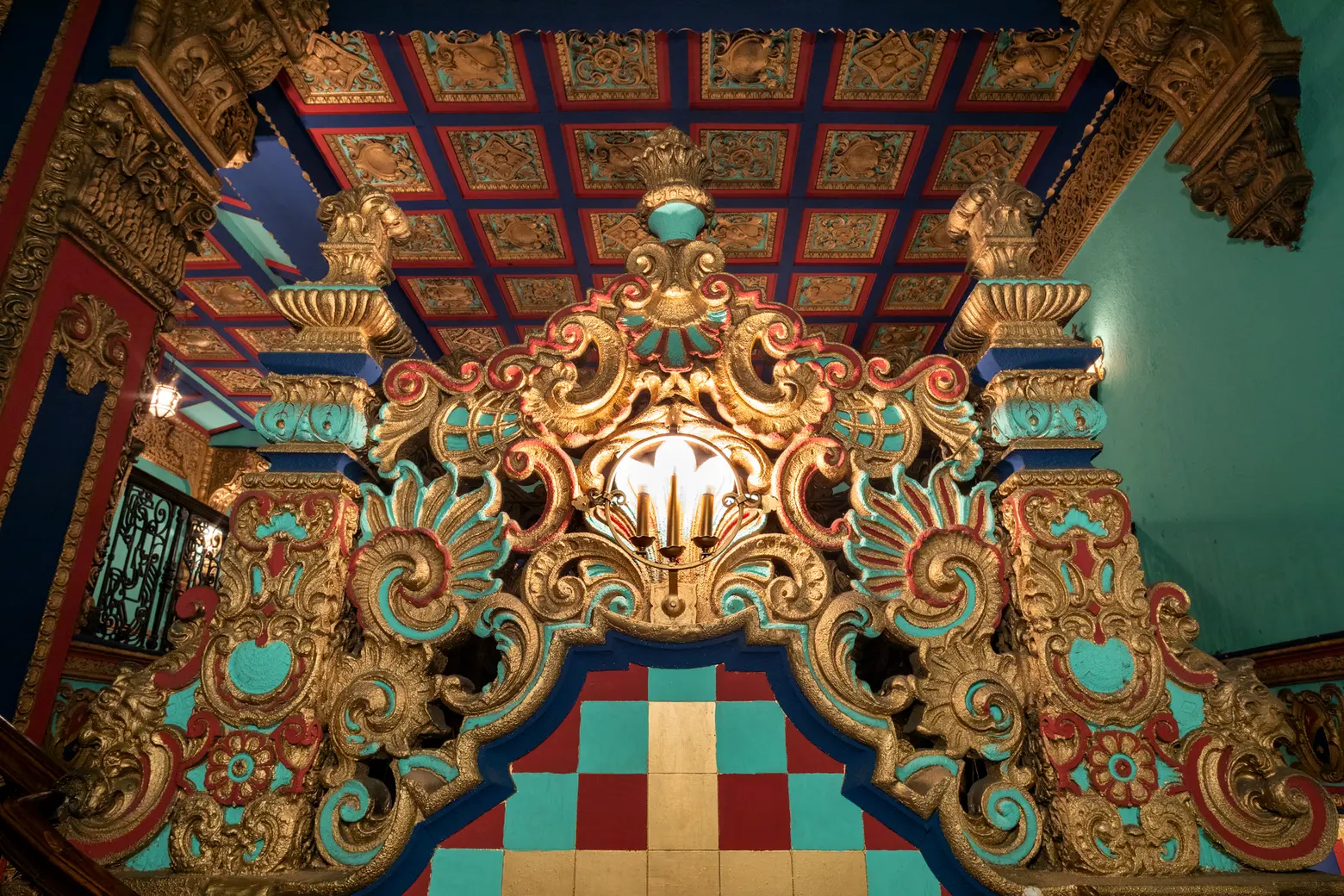
The only things inside the theater today that are NOT original are the huge 18-foot chandelier hanging in the auditorium and some of the statues above the proscenium. We needed a new chandelier that would provide a lot more light in our sanctuary and we also changed some of the nude Roman statues, clothing them with robes or fitting them wings so that they appeared more conservative and appropriate for our church.
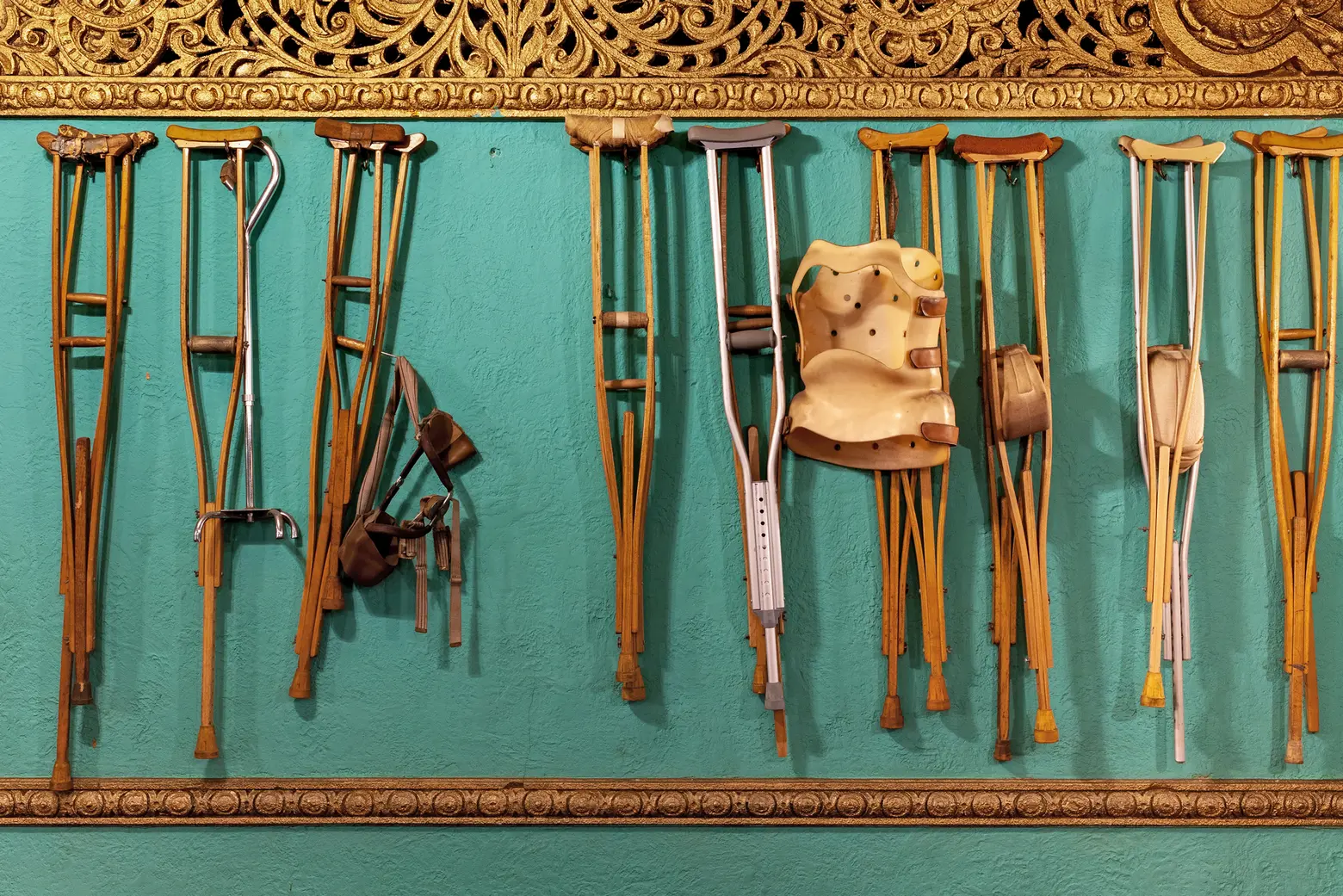
We also have a display of crutches discarded by our healed church members on display in the lobby. Those go back to the time when our late founder, Apostle Johnnie Washington, helped people from all walks of life in our “Center of Hope” find peace, love, help, and hope.

The building’s exterior was landmarked by New York City in 1999 so we are not allowed to change any of the exterior details like the intricate terra cotta ornamentation on the façade. The interior is not landmarked, but the way it looks inside today is really, for the most part, the way it looked when it opened in 1929.
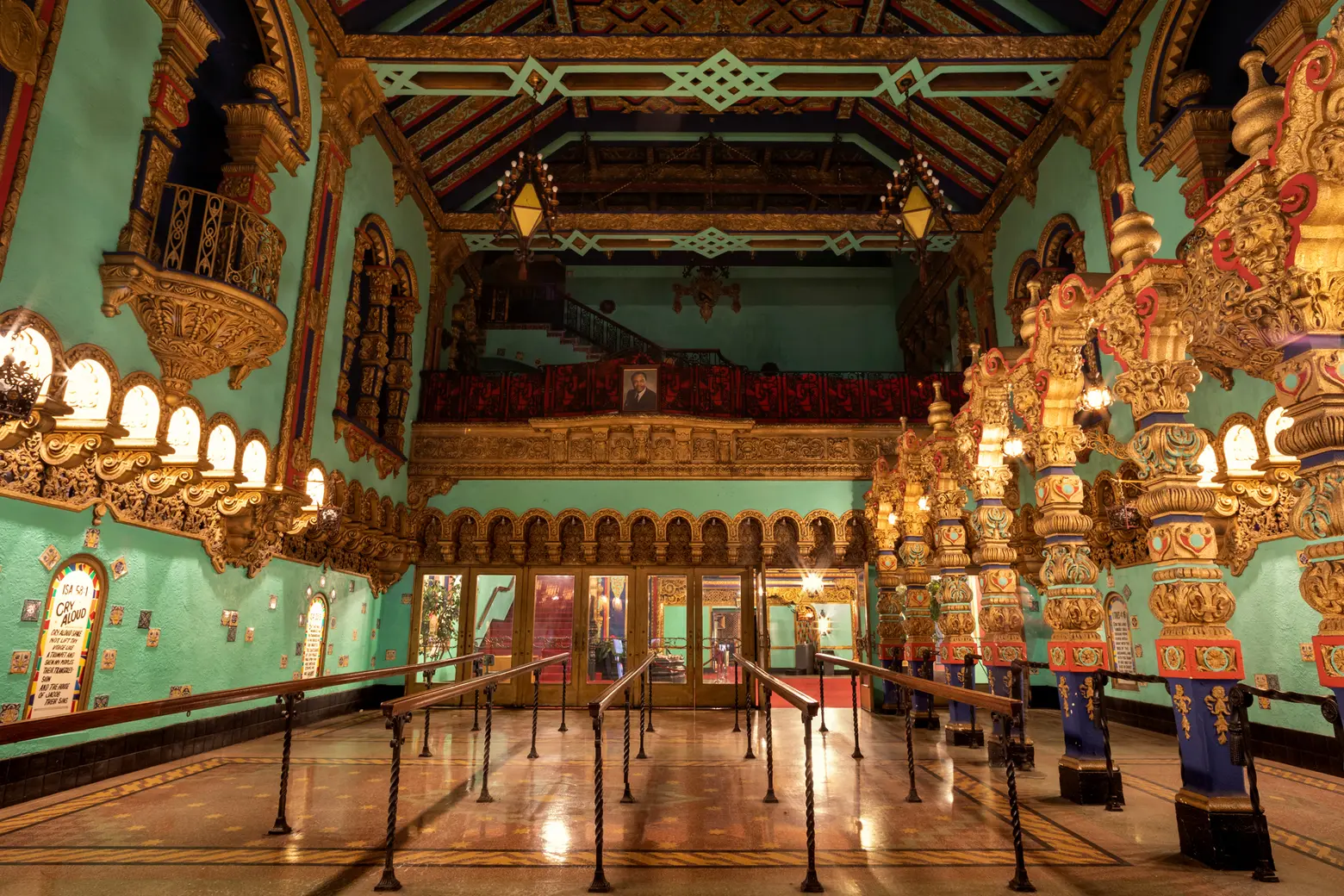
Today, our congregation has only 250 people so the theatre is mainly empty, but it once had thousands of members. I do remember one day, though, when the theatre was filled to capacity. On April 10, 2002, a young rap artist, whose stage name was Mase, came here. His real name was Mason Durell Betha and for a time he quit rap music and converted to Christianity and he preached a sermon here. It was an amazing site, as it was the first time I ever saw the building filled to capacity. Believe it or not, we had 4,000 young people in our sanctuary!

To learn more and join Untapped Cities Insiders on their next exploration of off-limit places in and around New York City, CLICK HERE >>
RELATED:
- Behind the scenes at the Loew’s Jersey City: How a 1929 Wonder Theatre was brought back to life
- Behind the scenes at the United Palace, Washington Heights’ opulent ‘Wonder Theatre’
- Loew’s Kings Theatre Will Reopen in Flatbush With All of its 1920s Gilded Glamour
All photos taken by James and Karla Murray exclusively for 6sqft. Photos are not to be reproduced without written permission from 6sqft.
